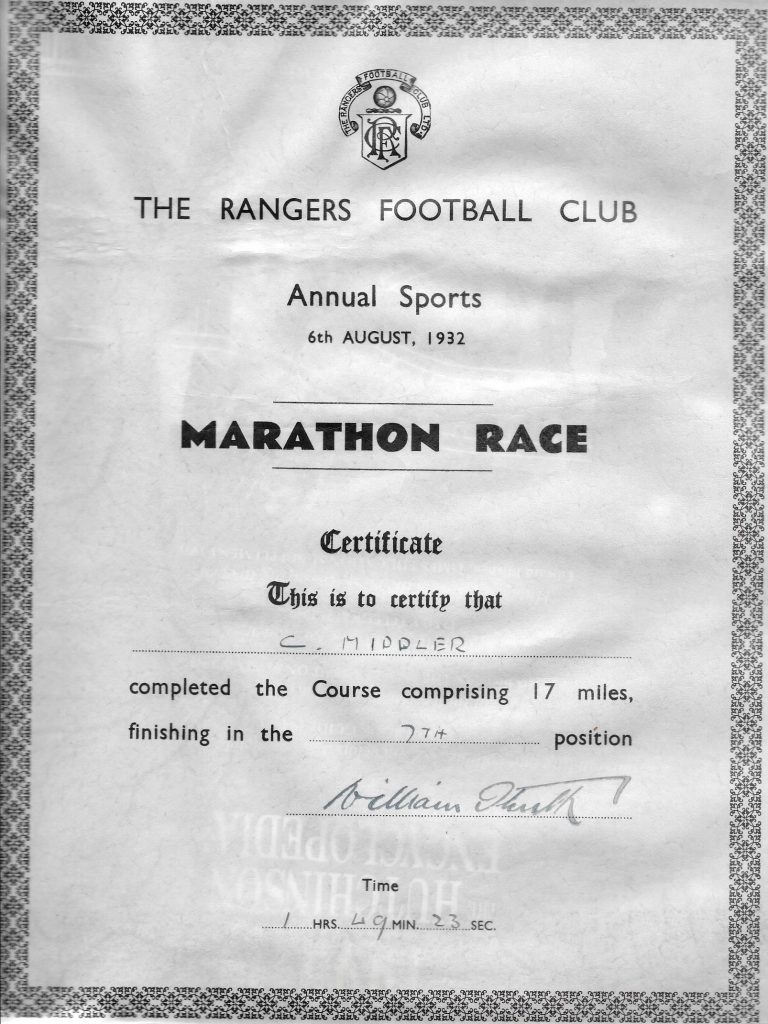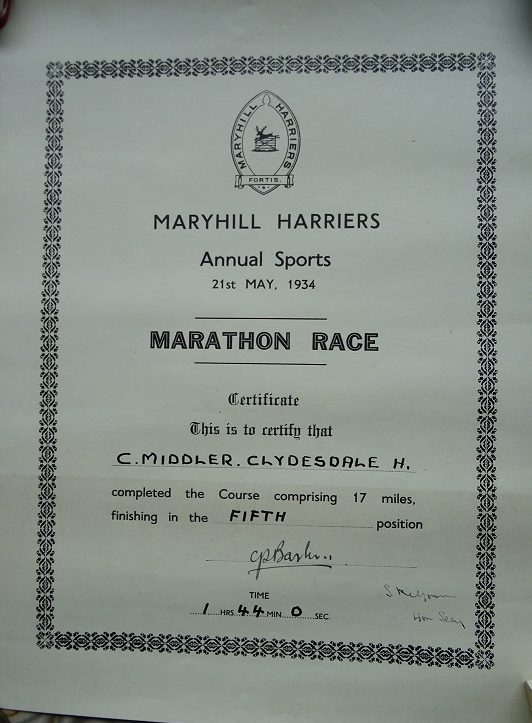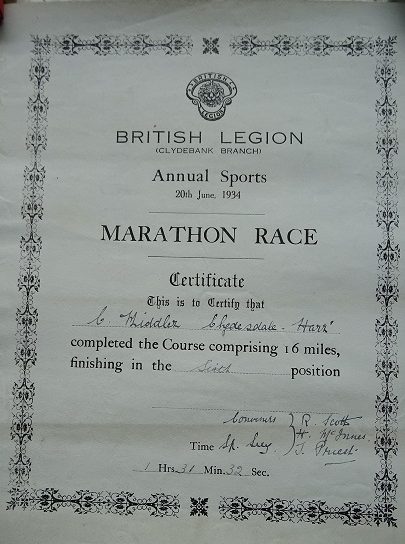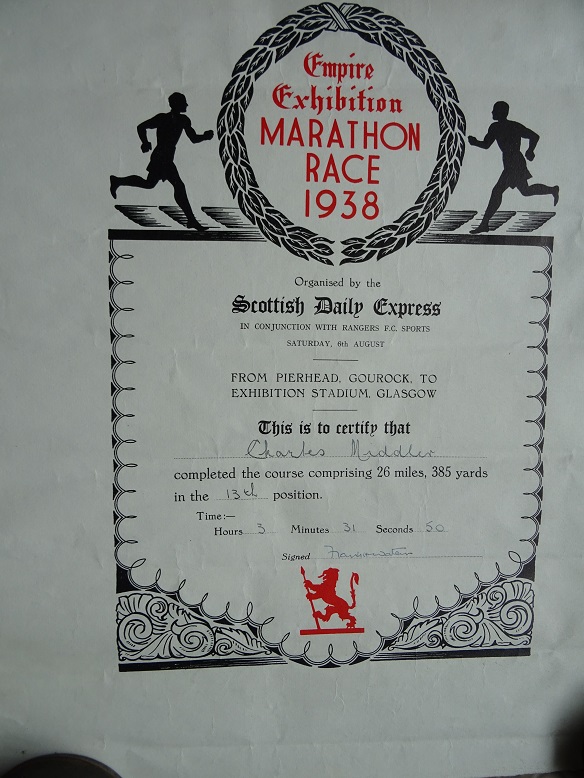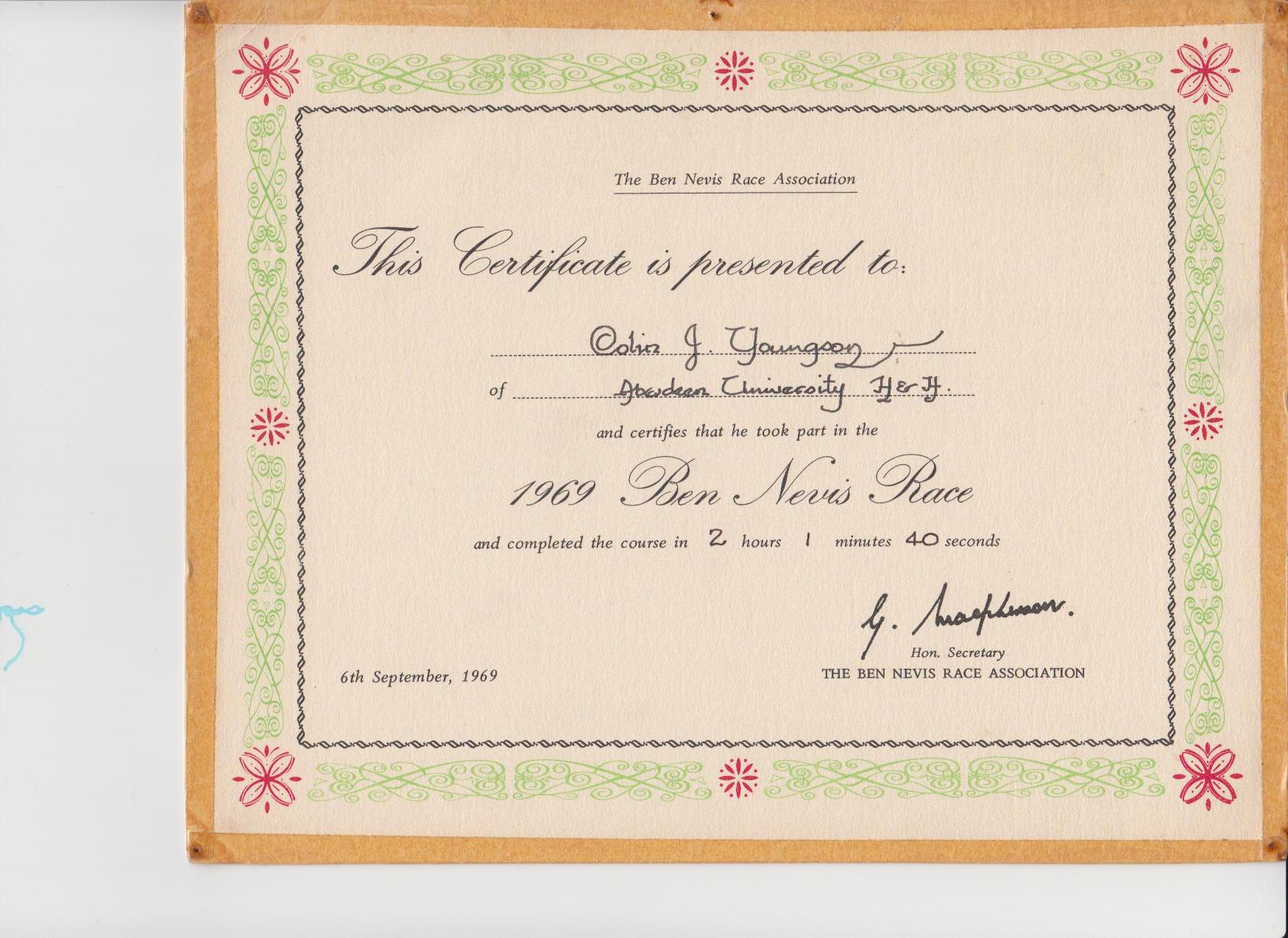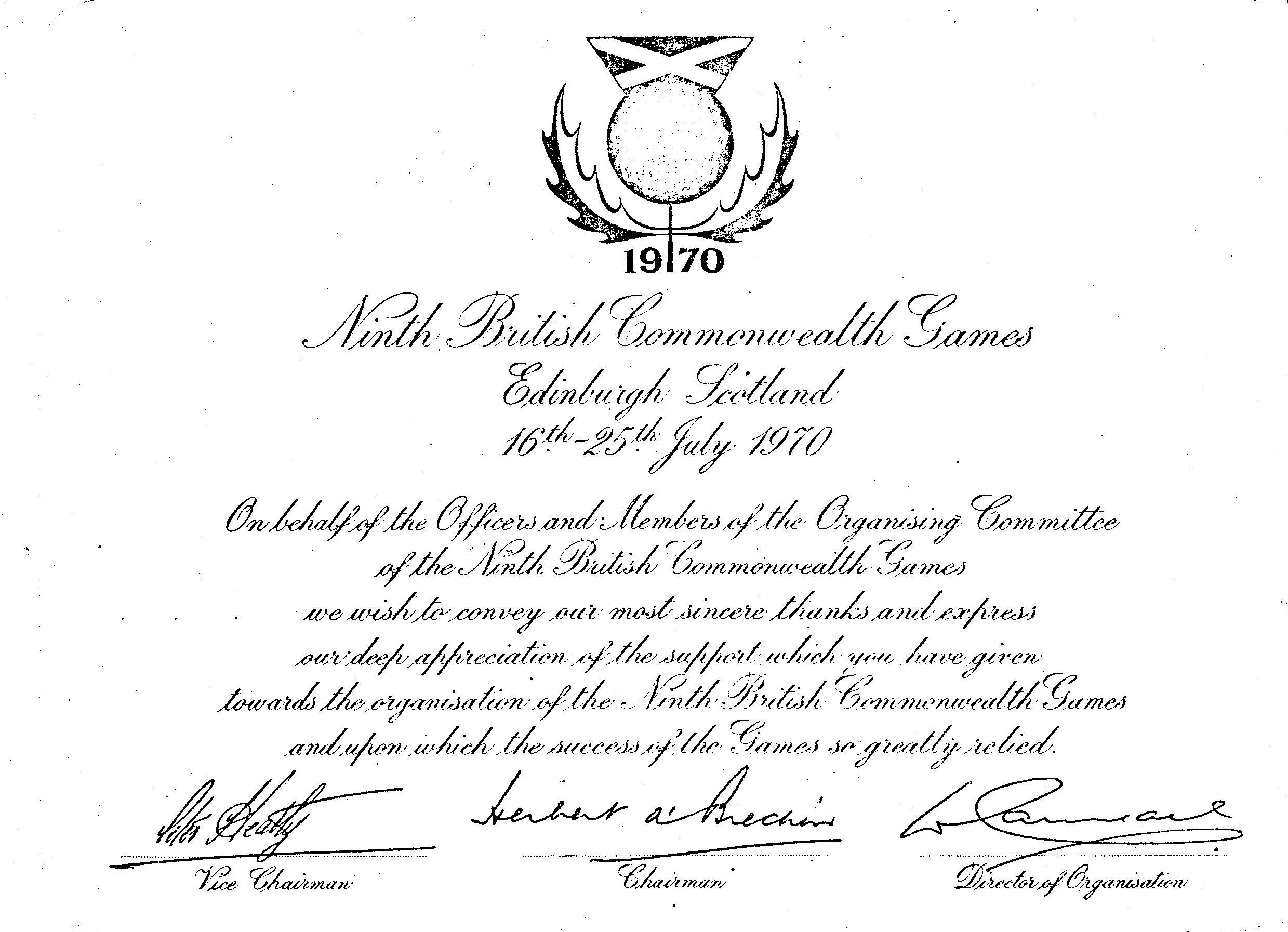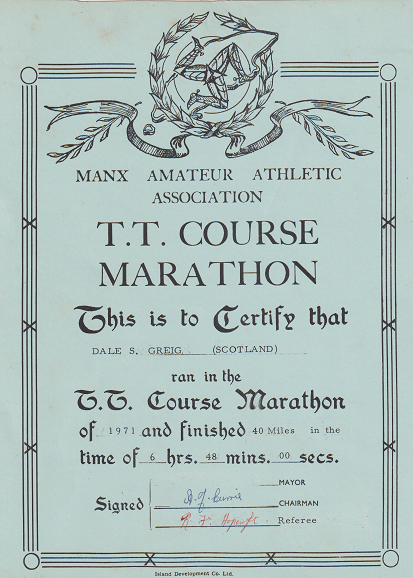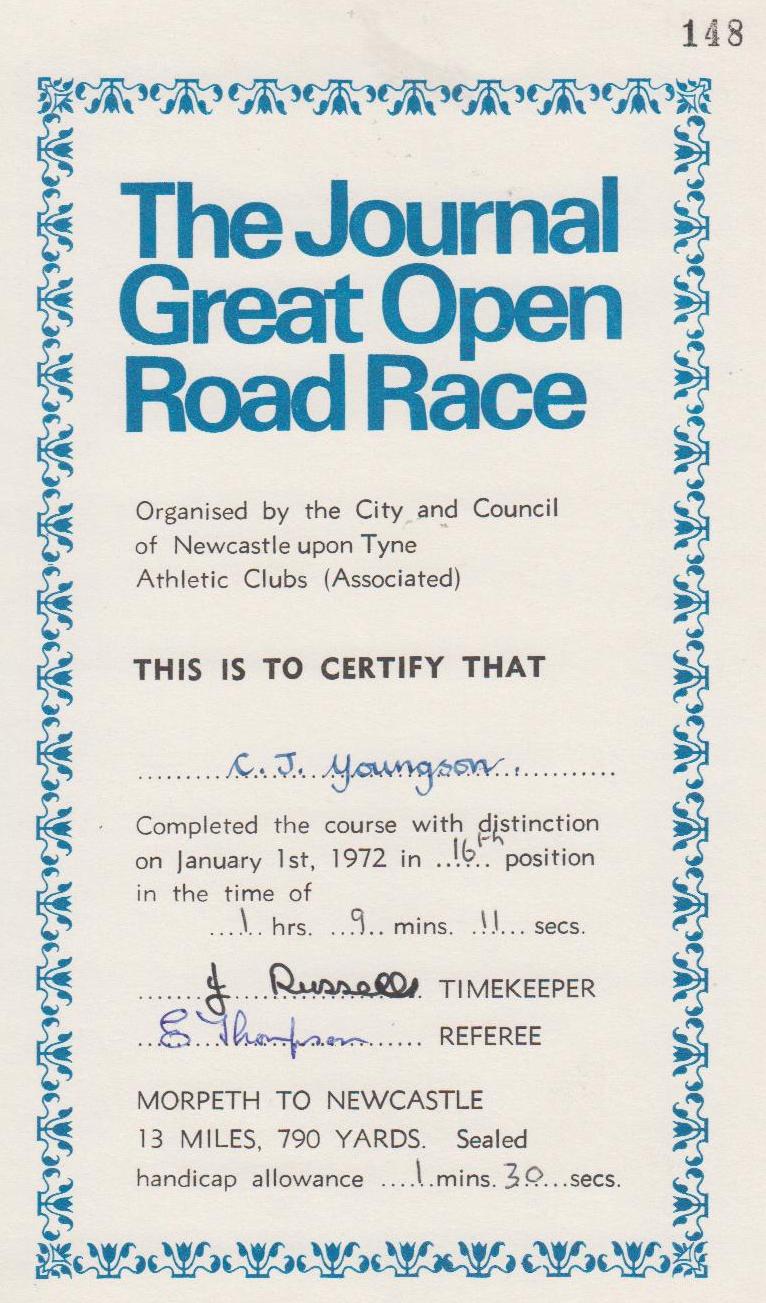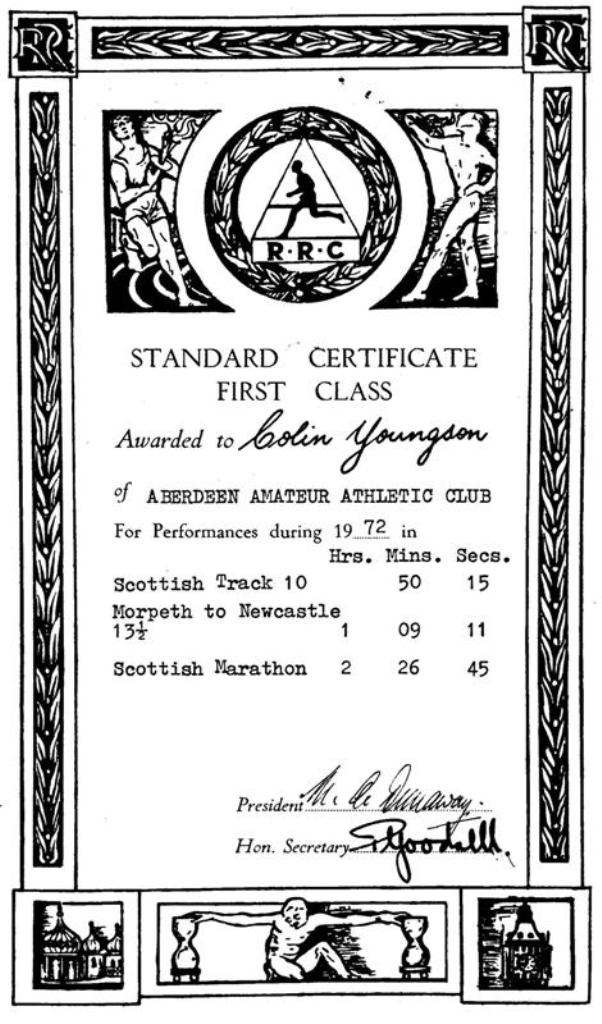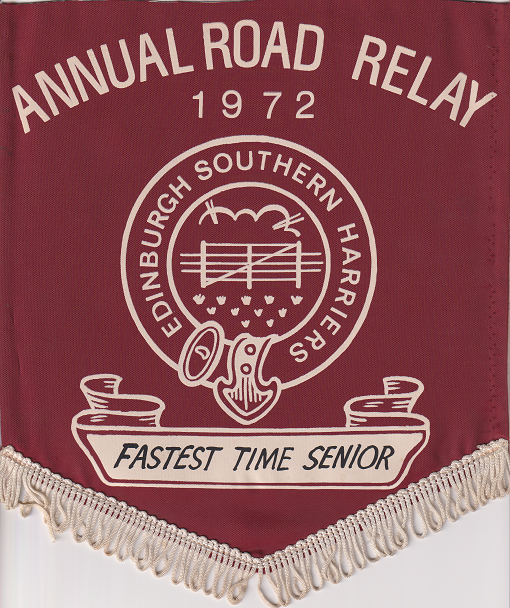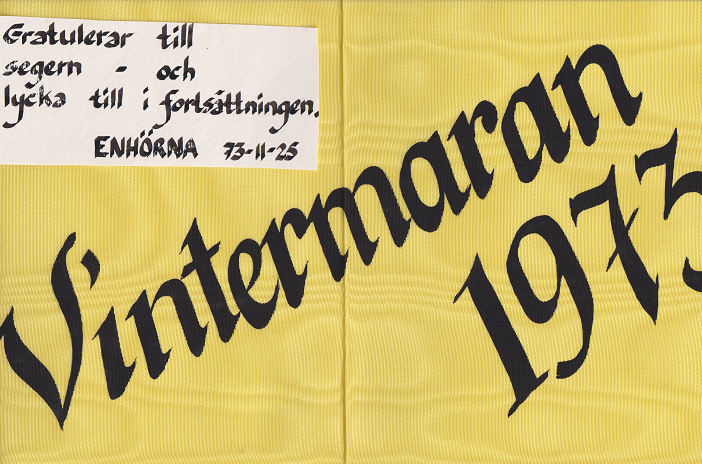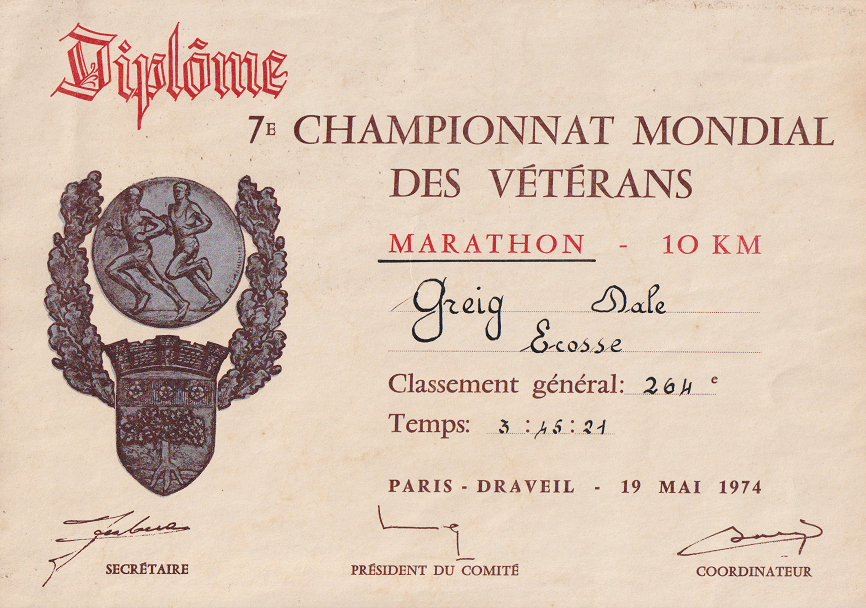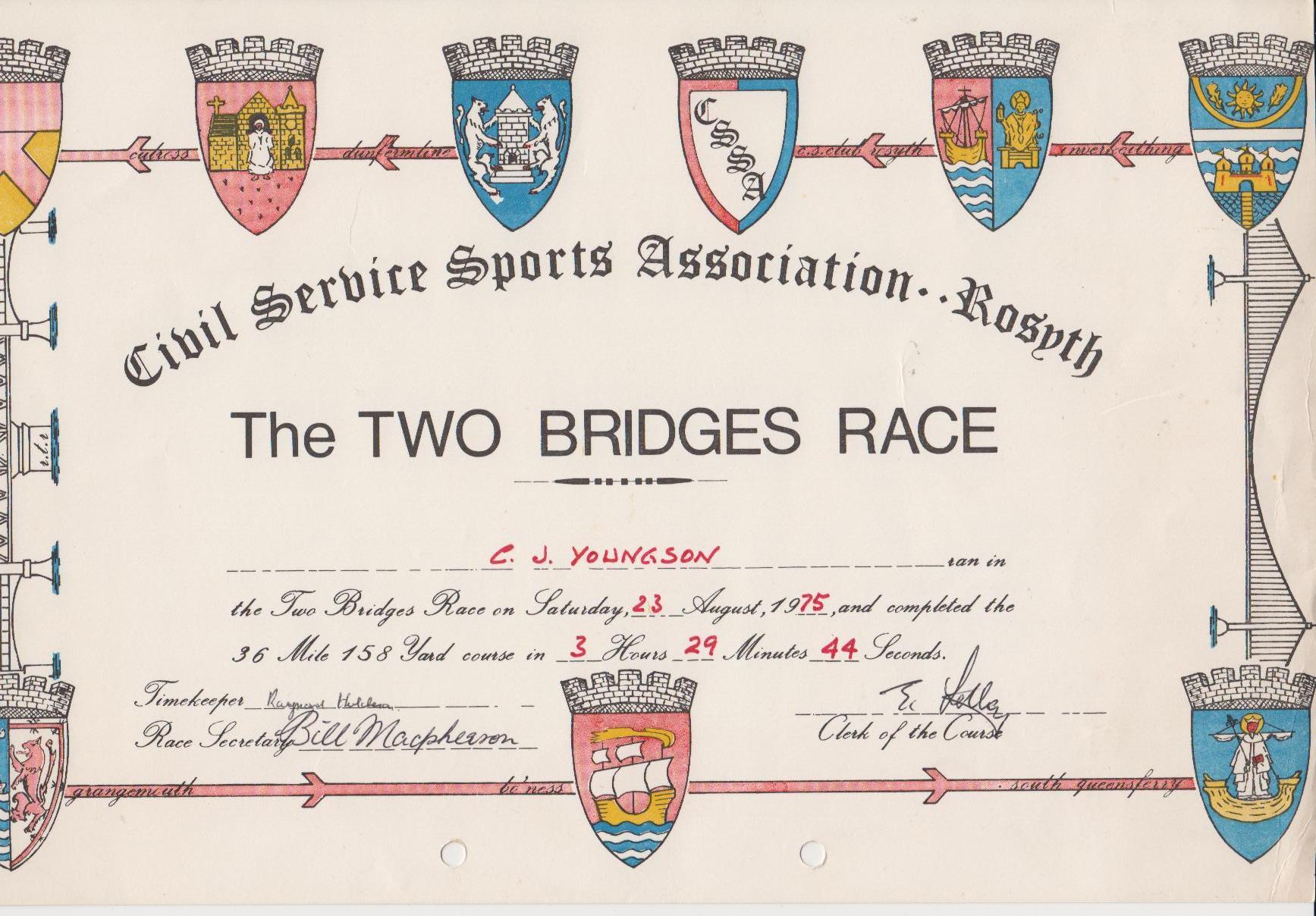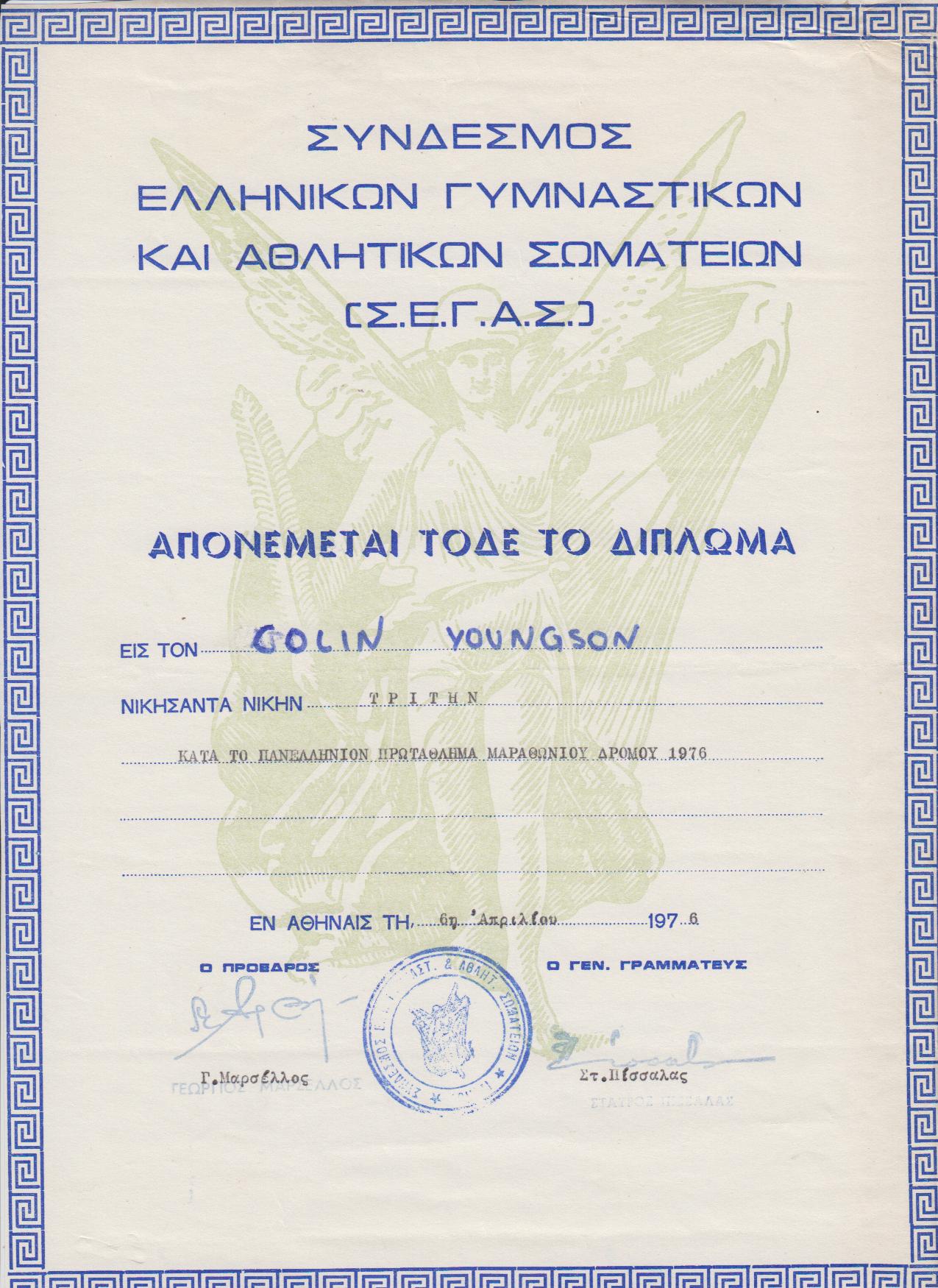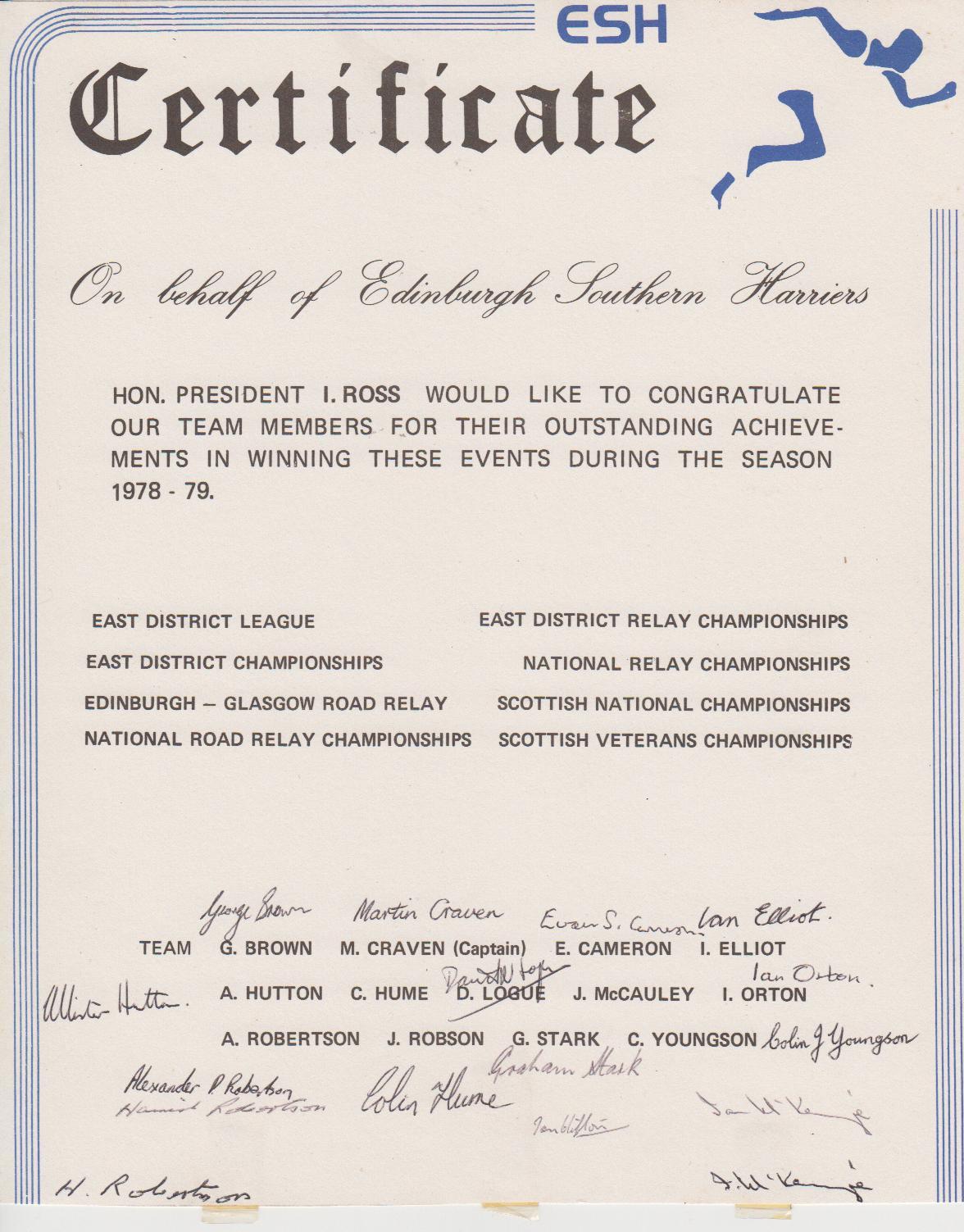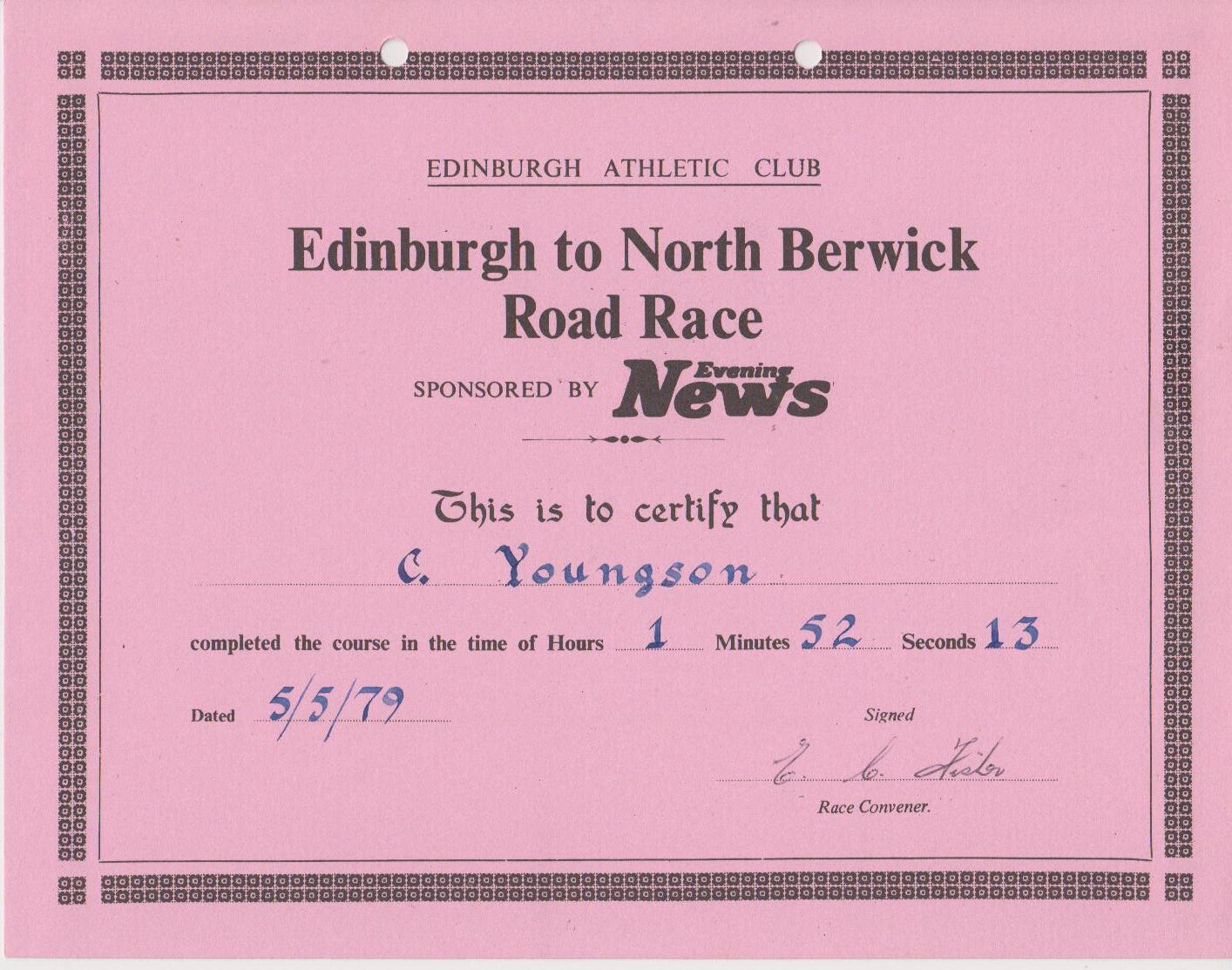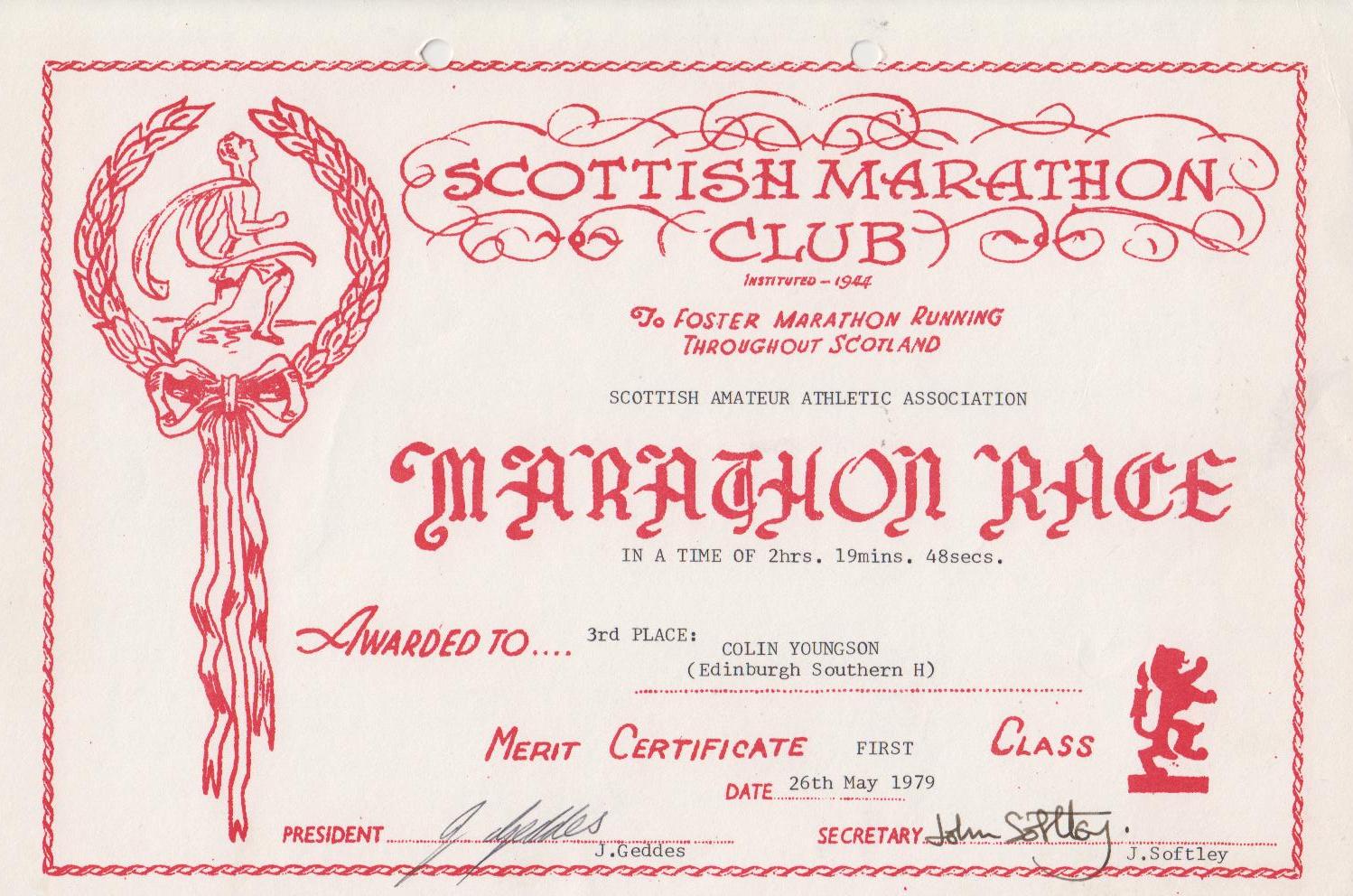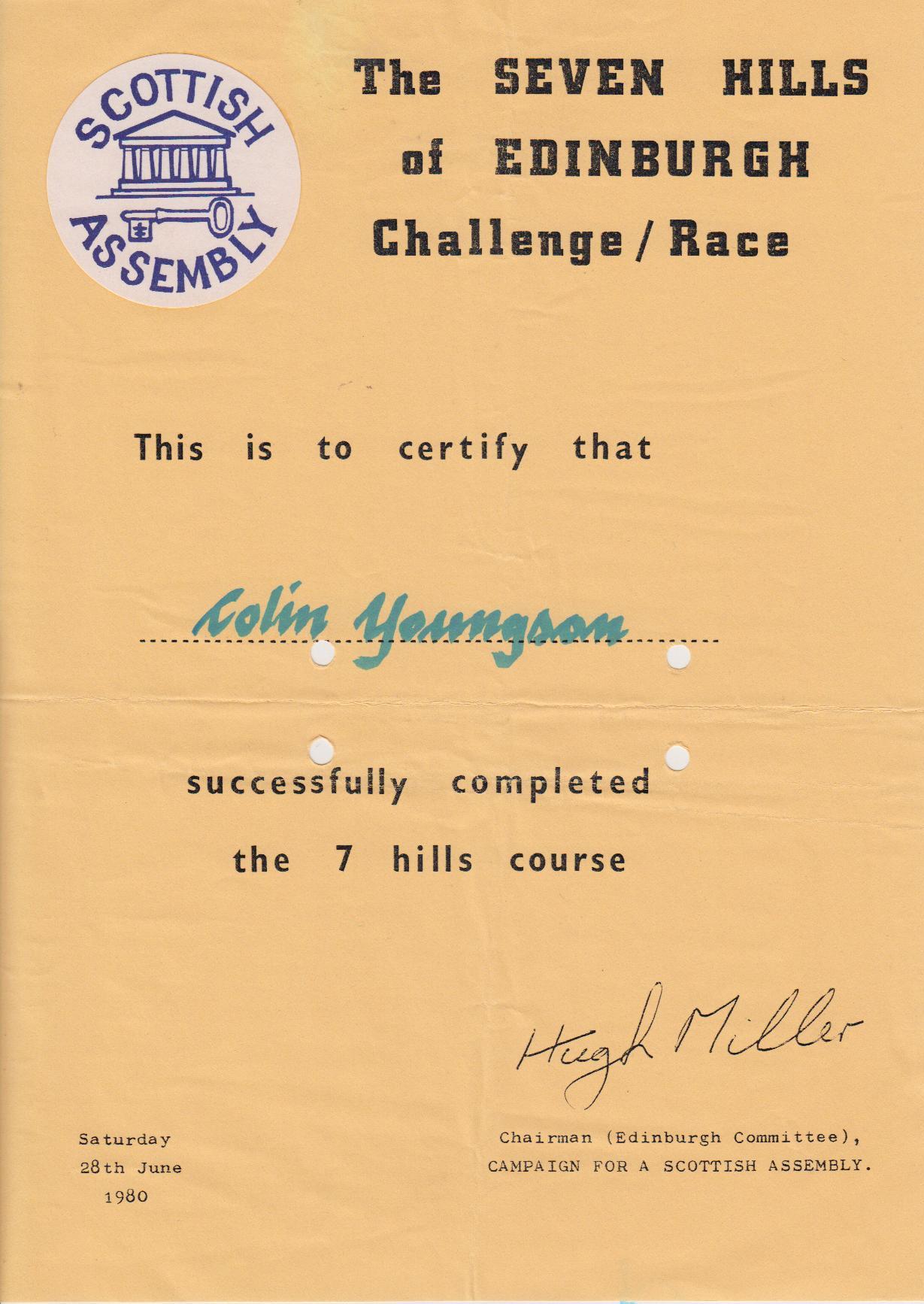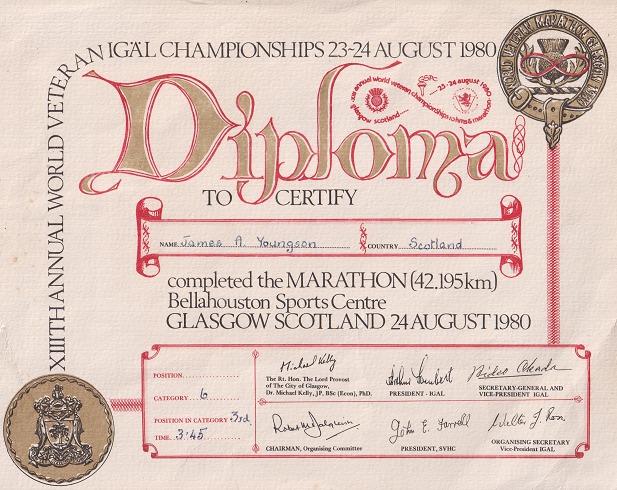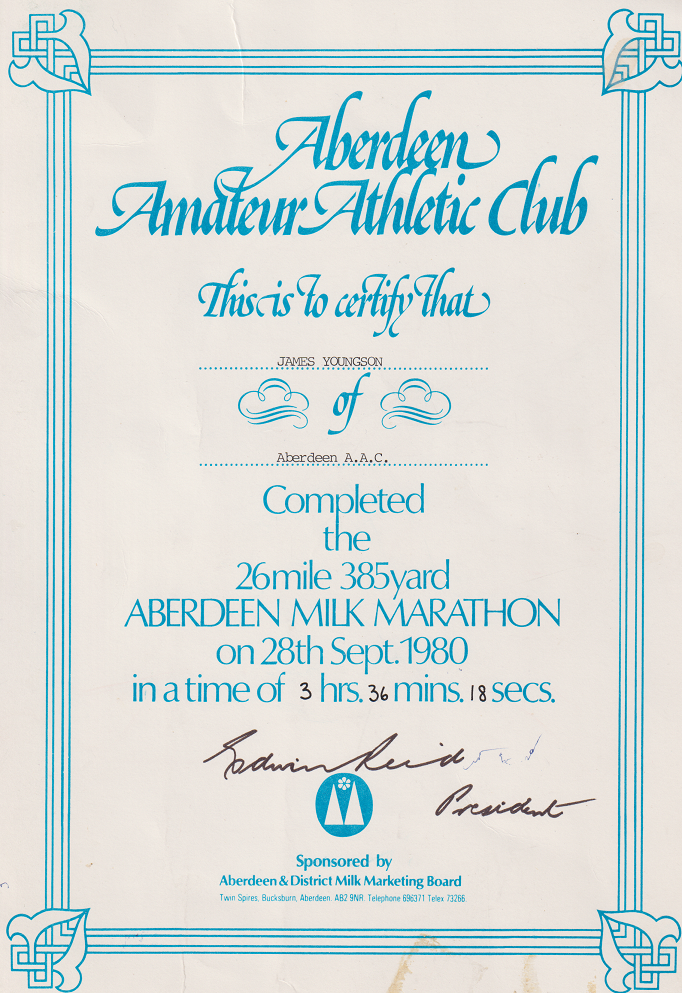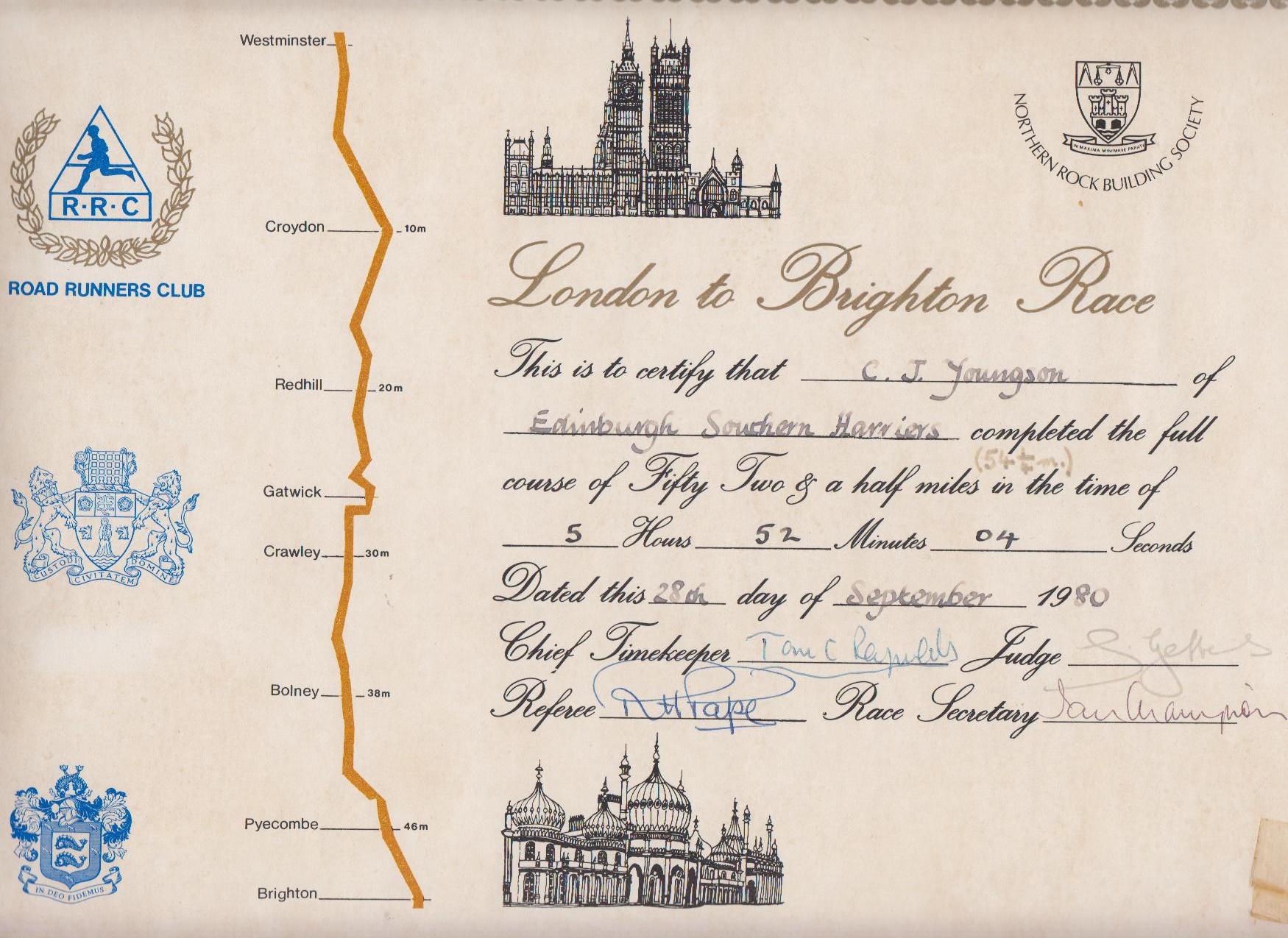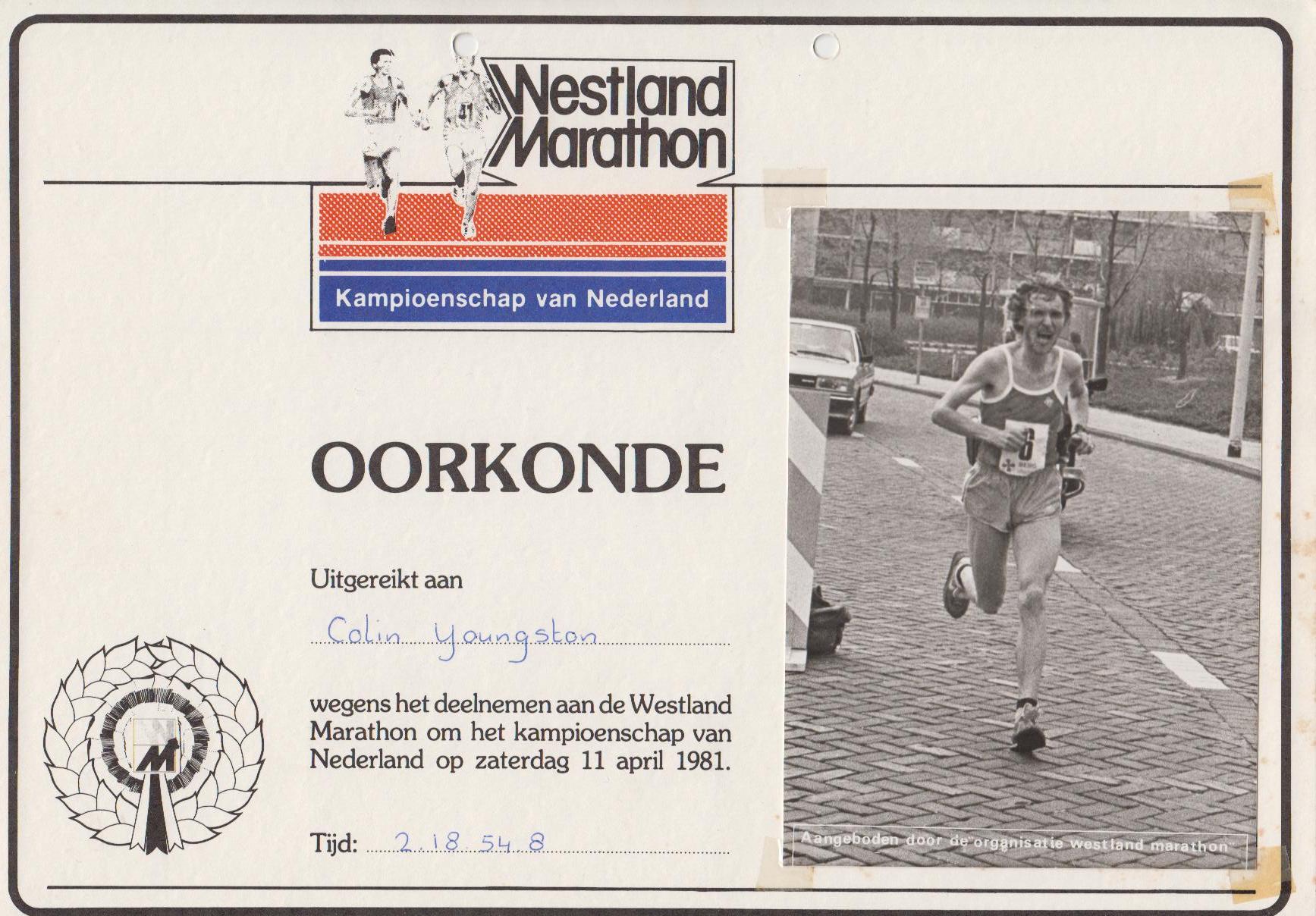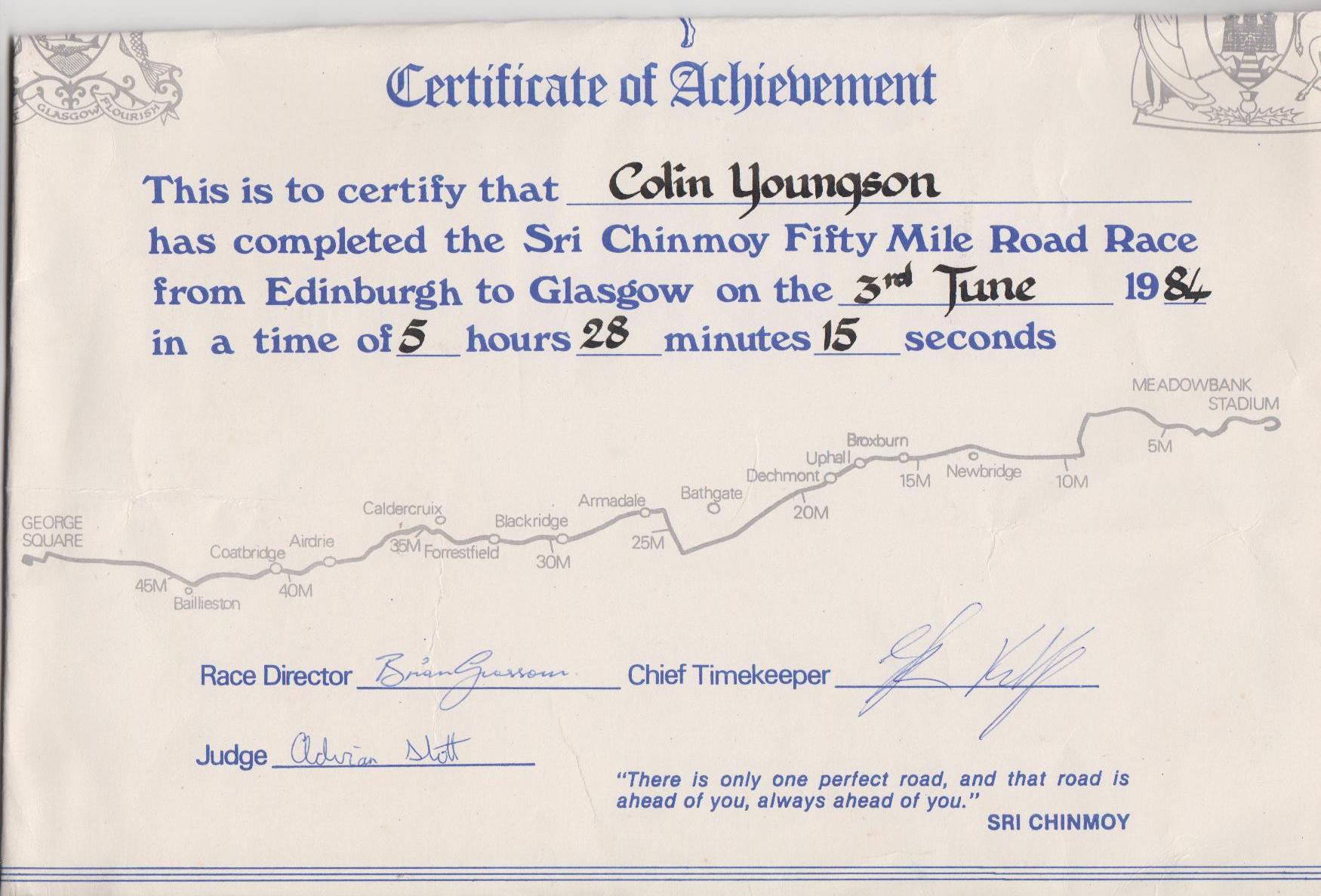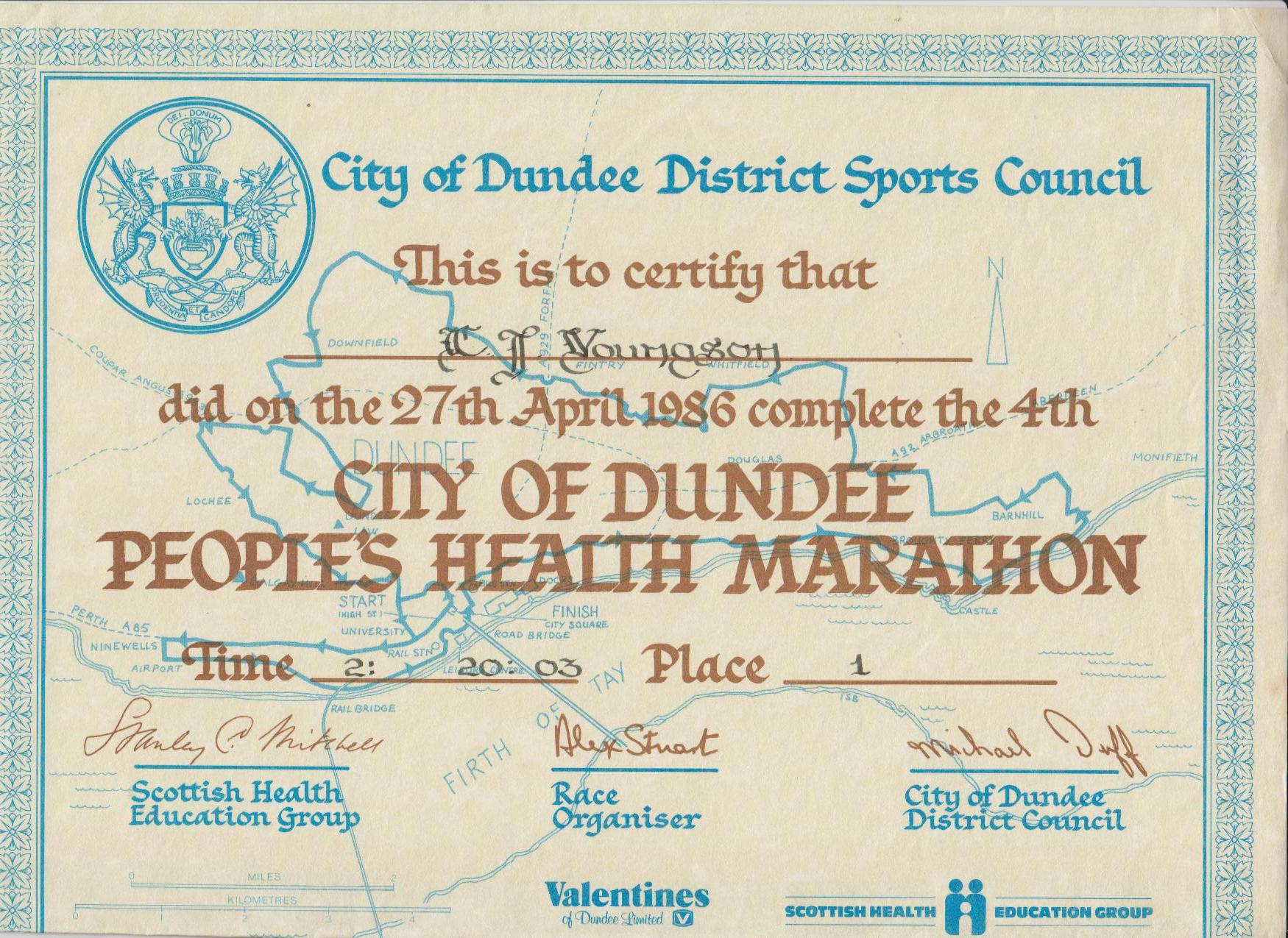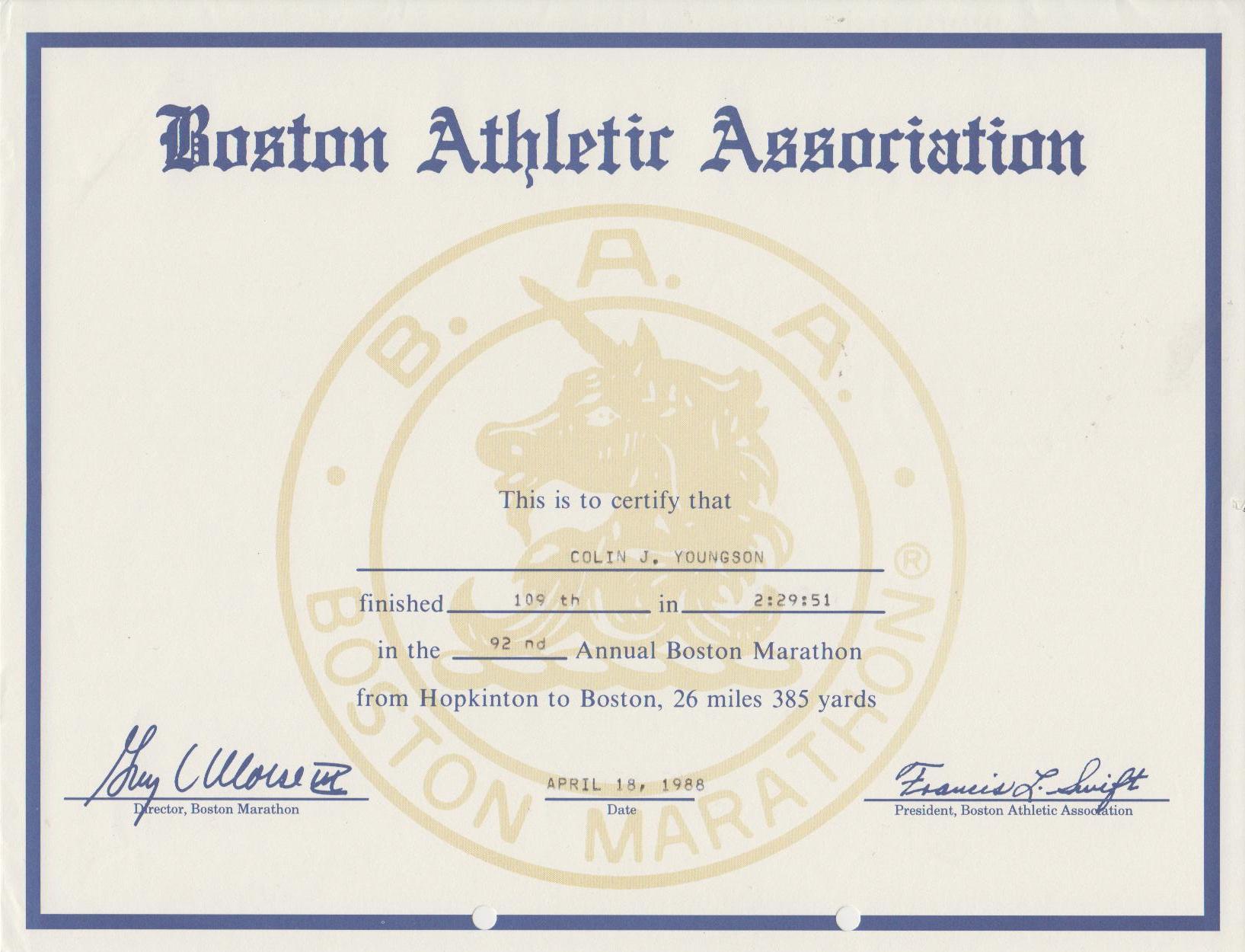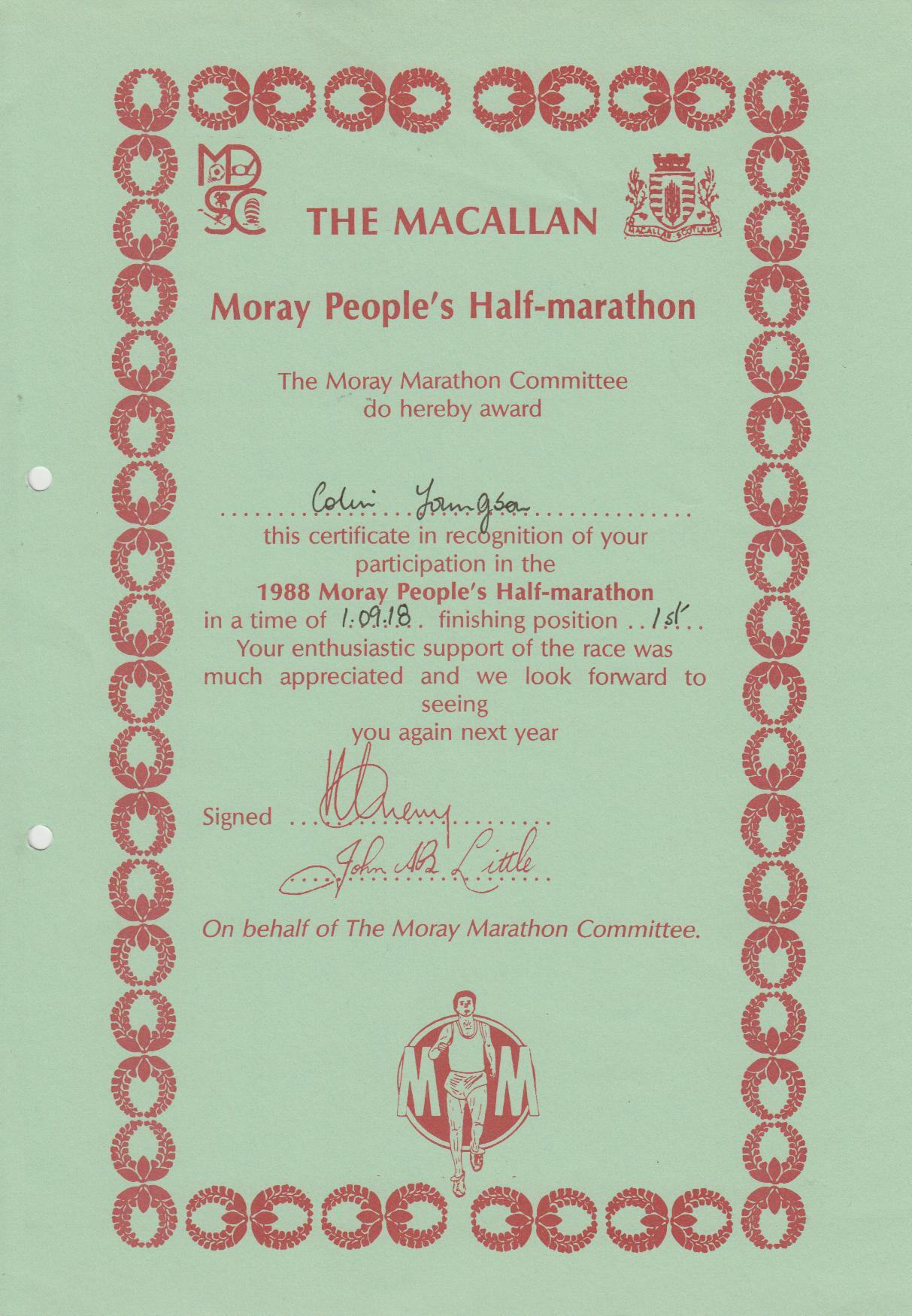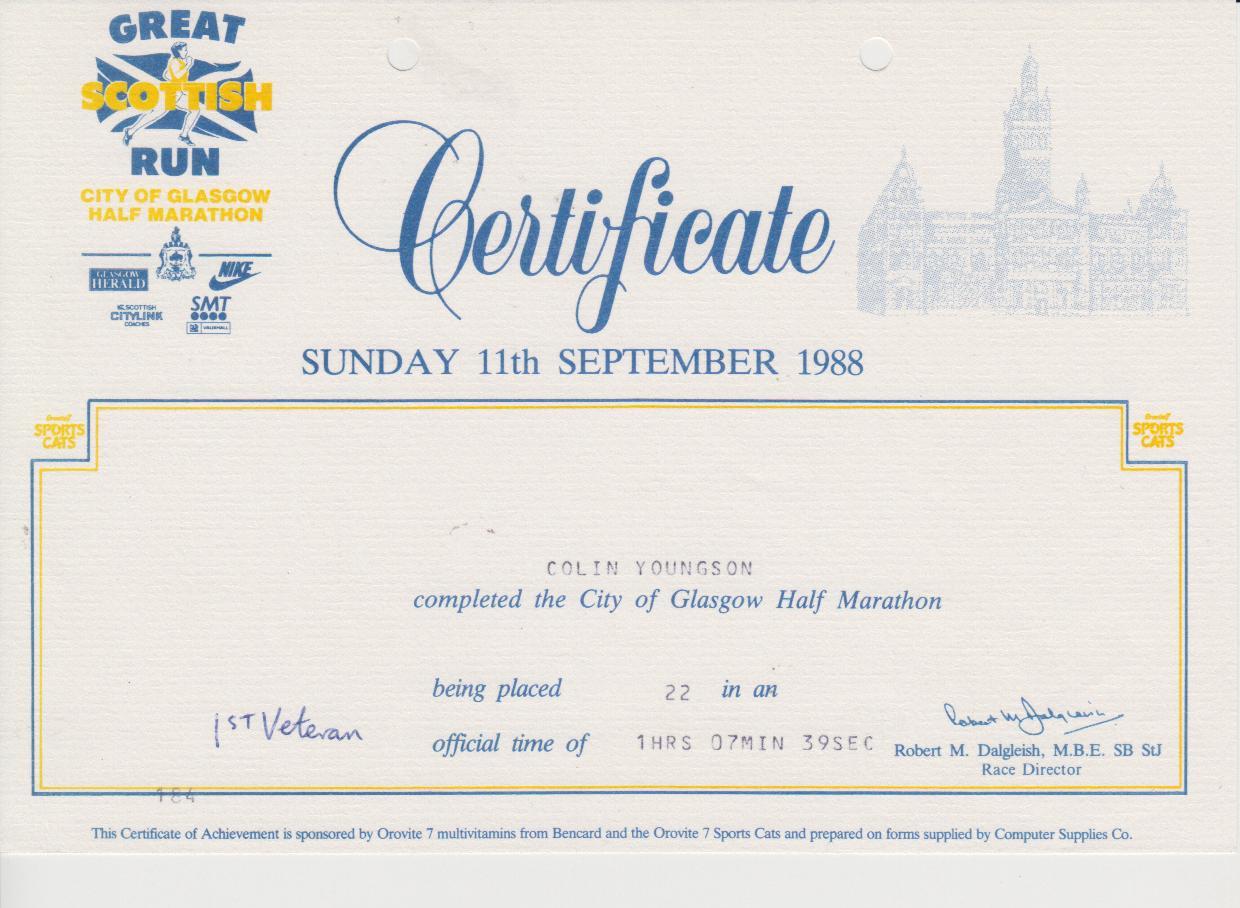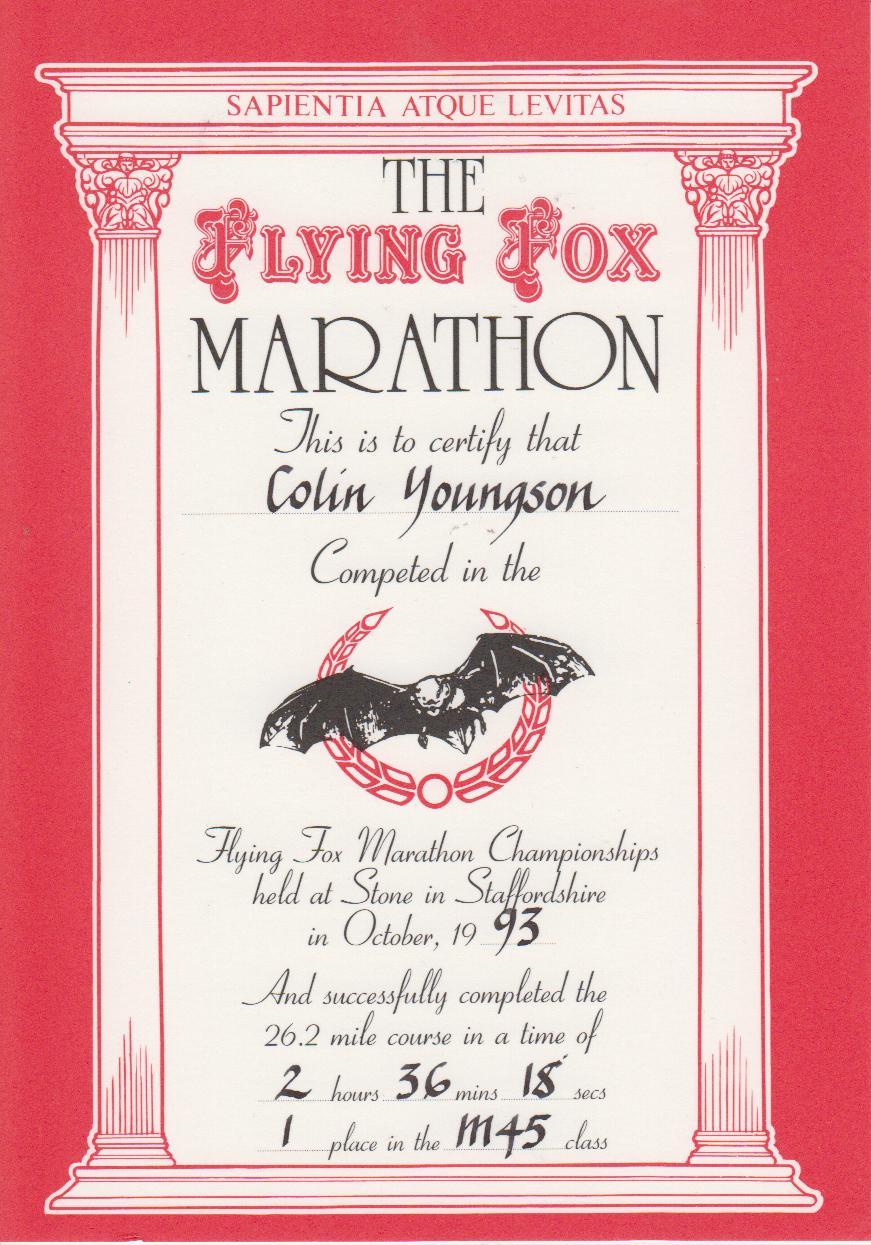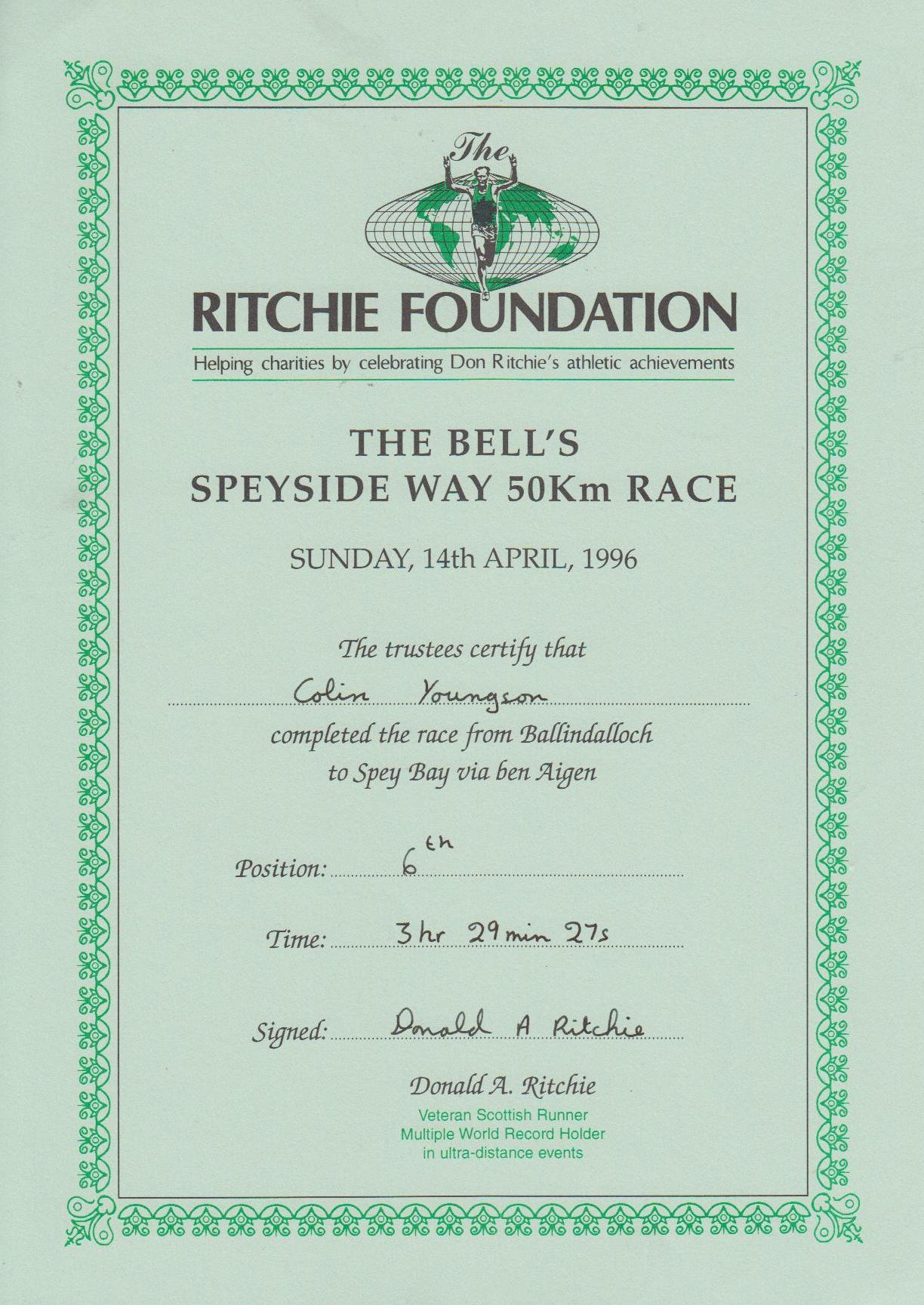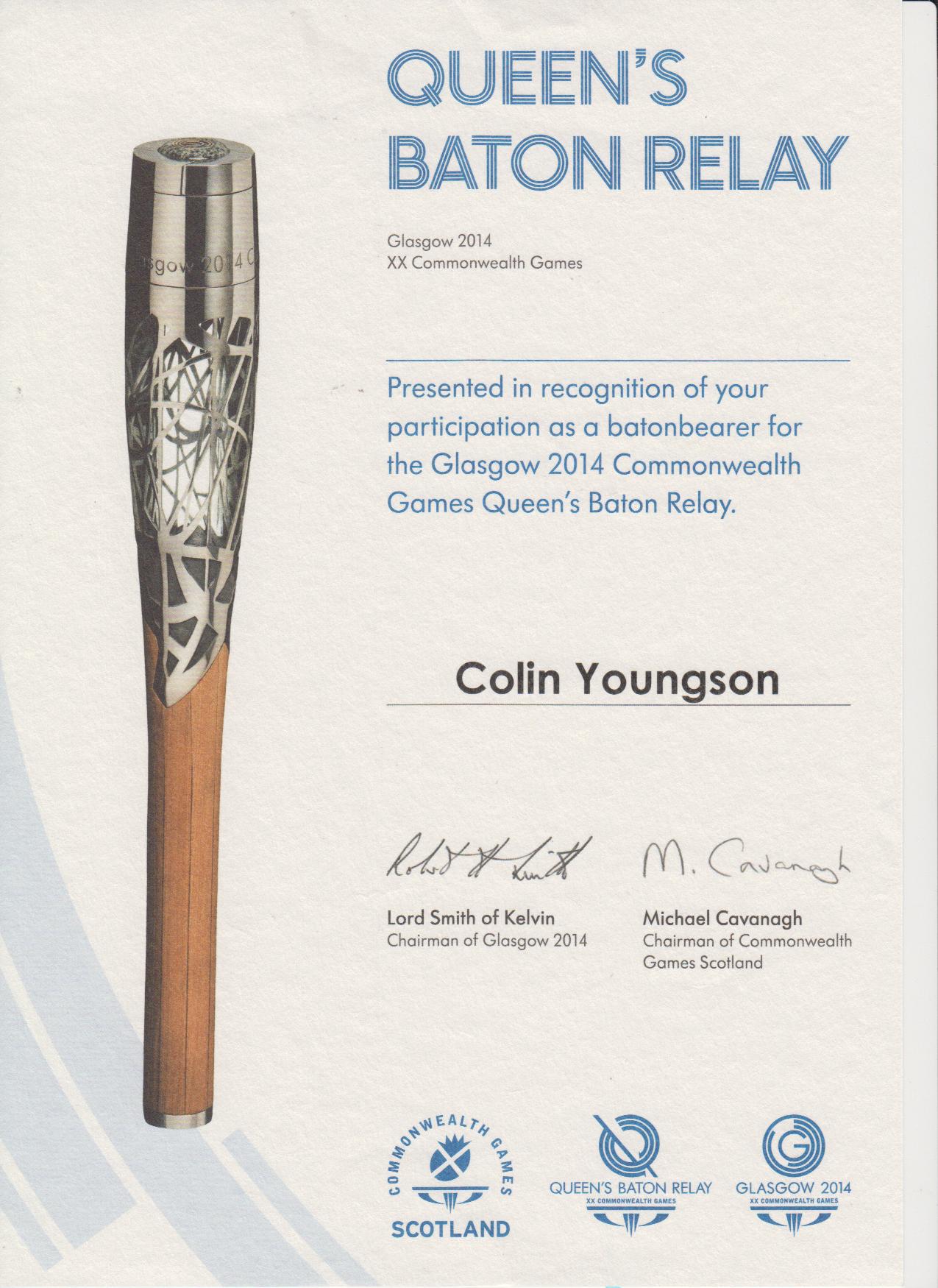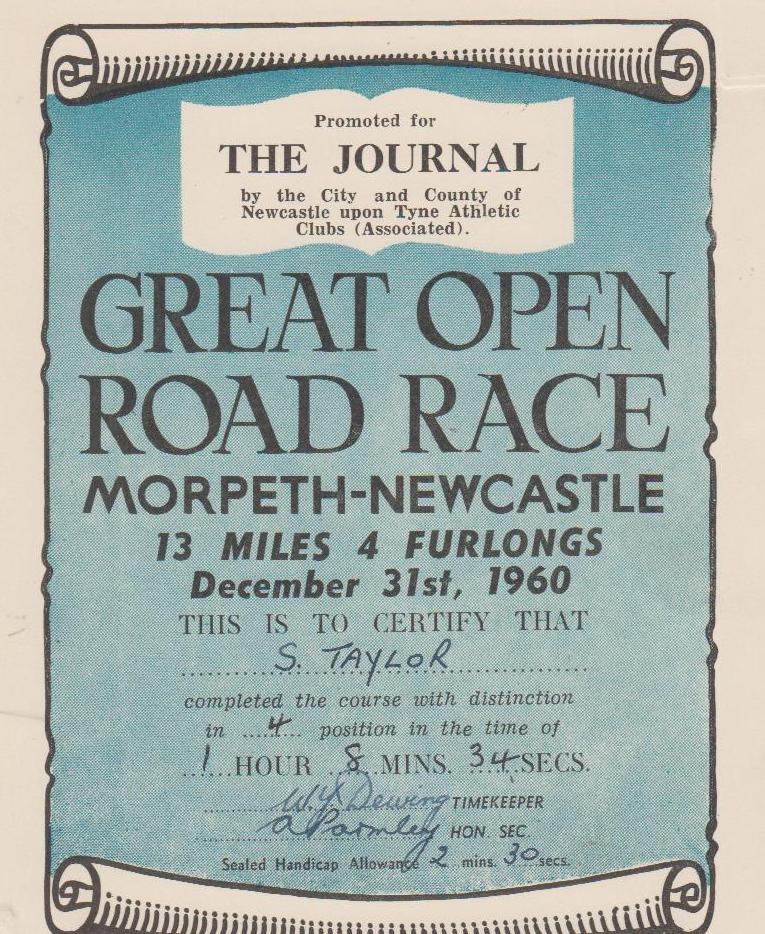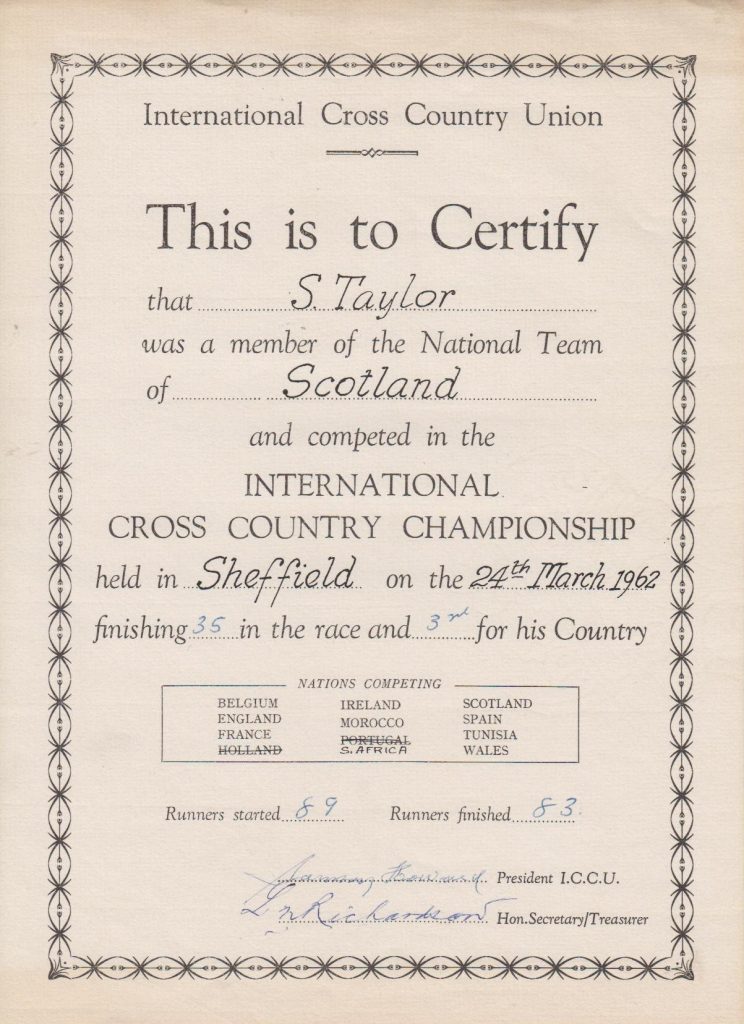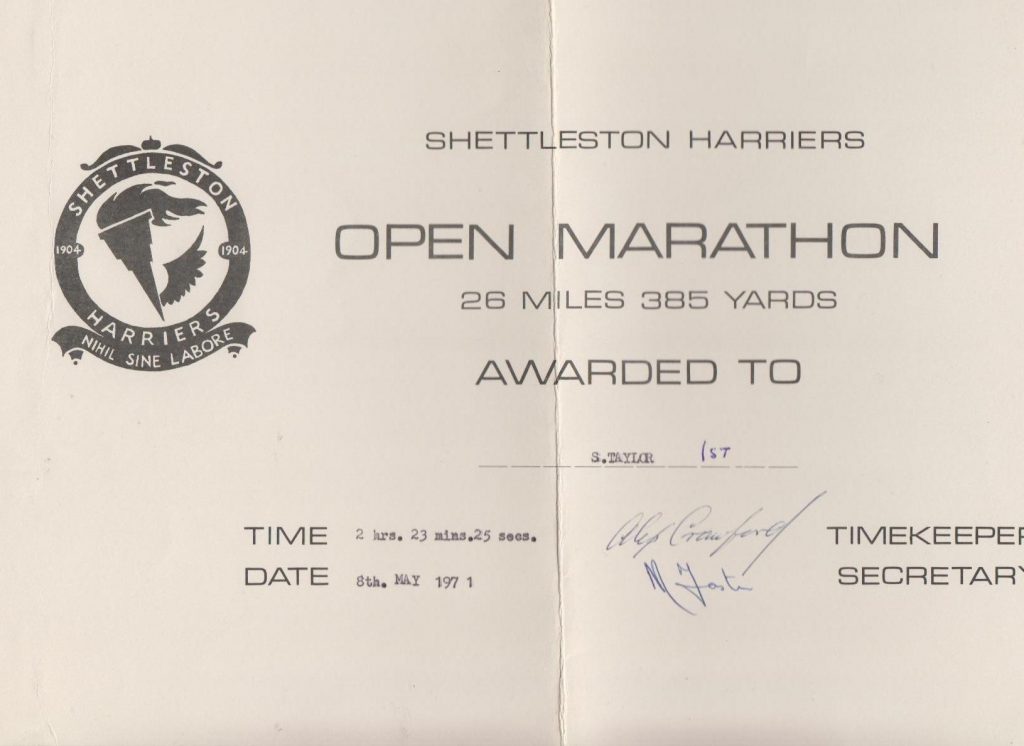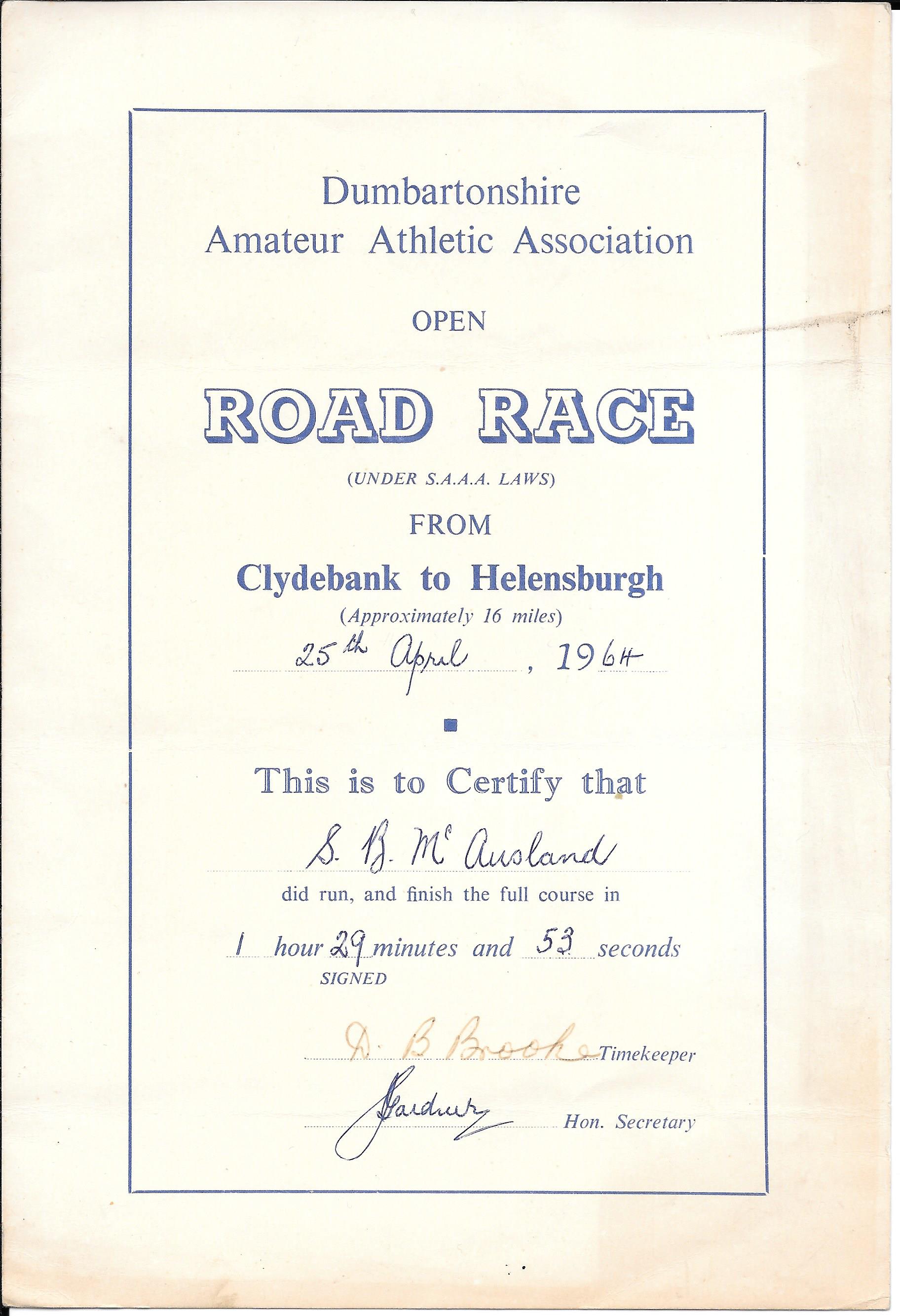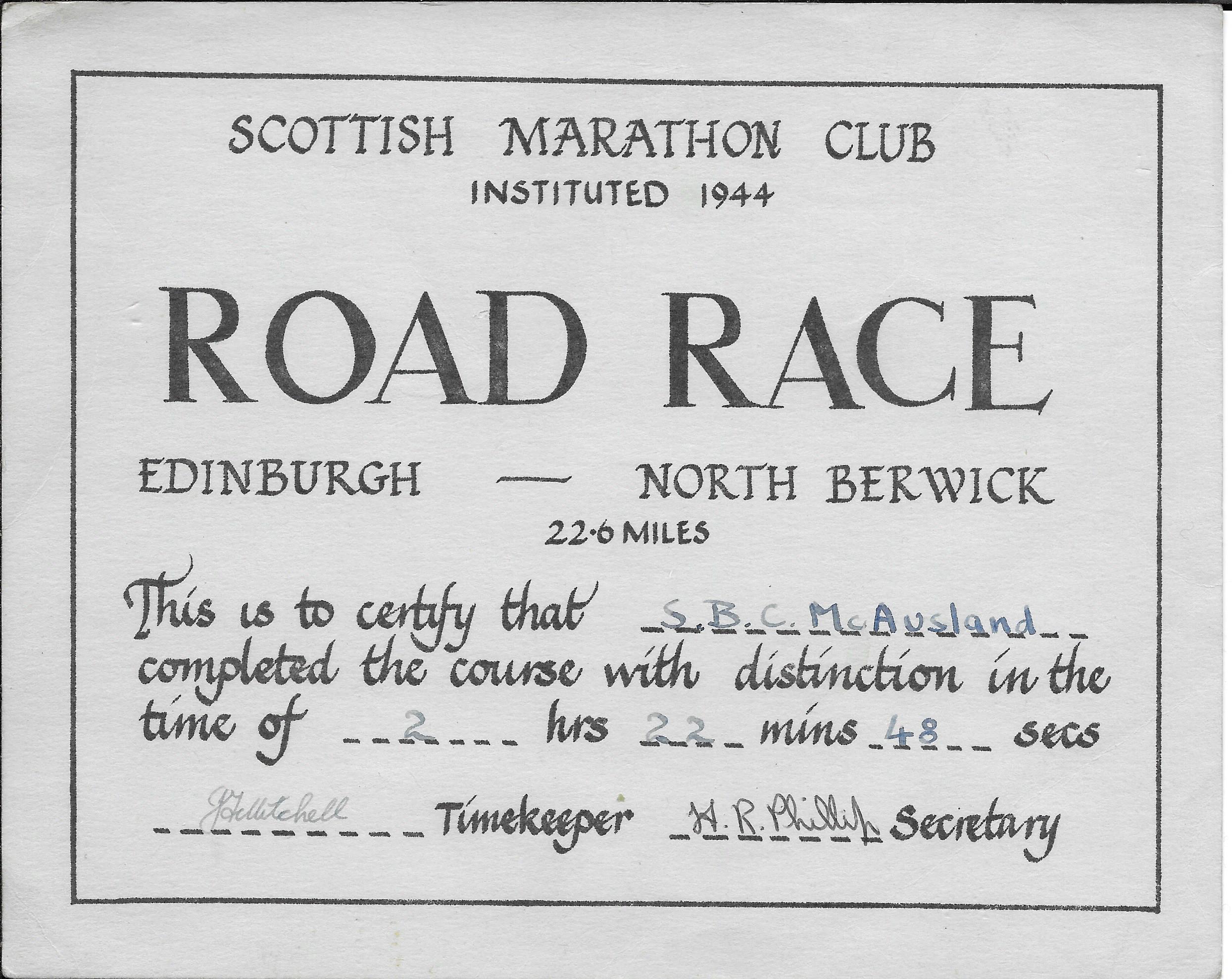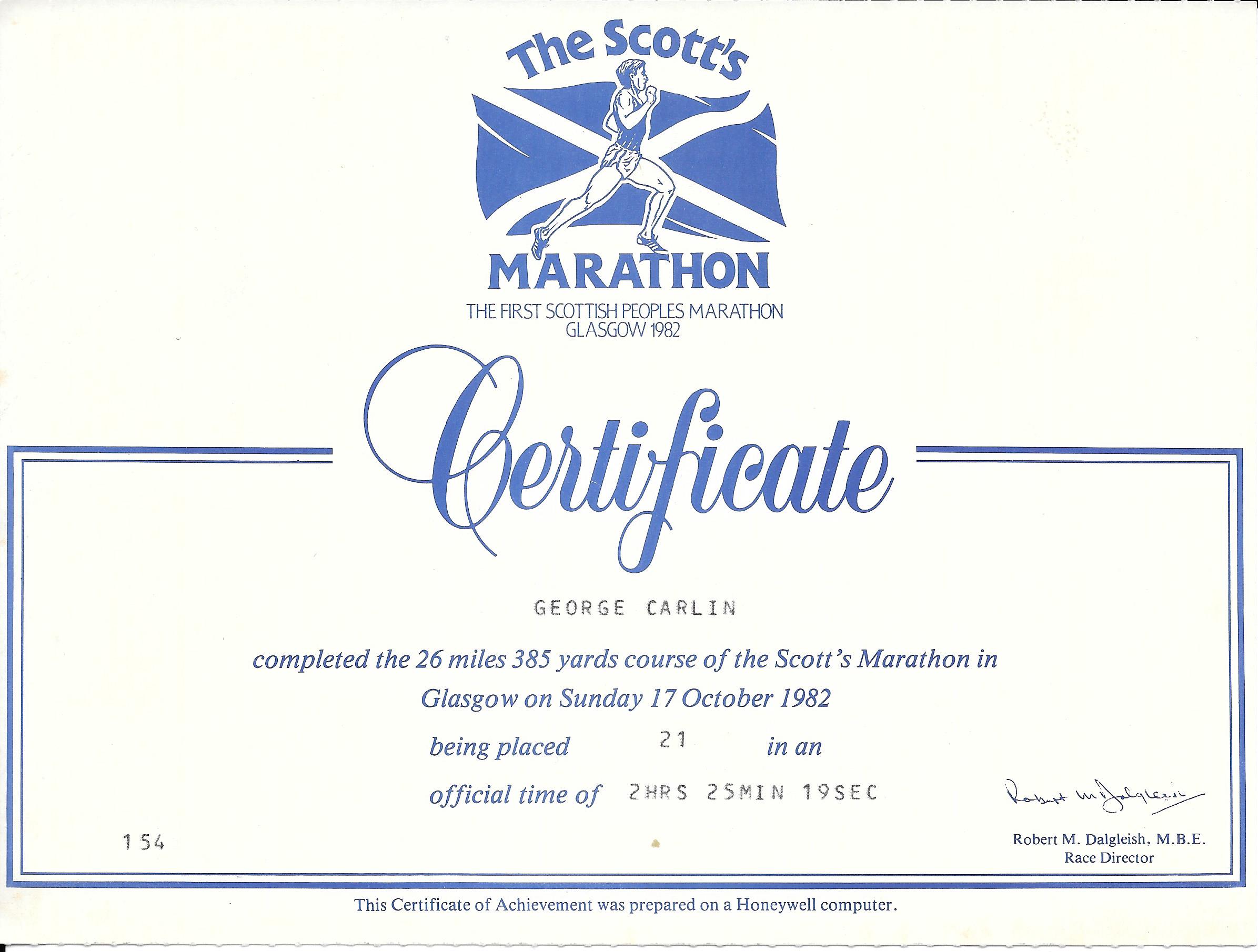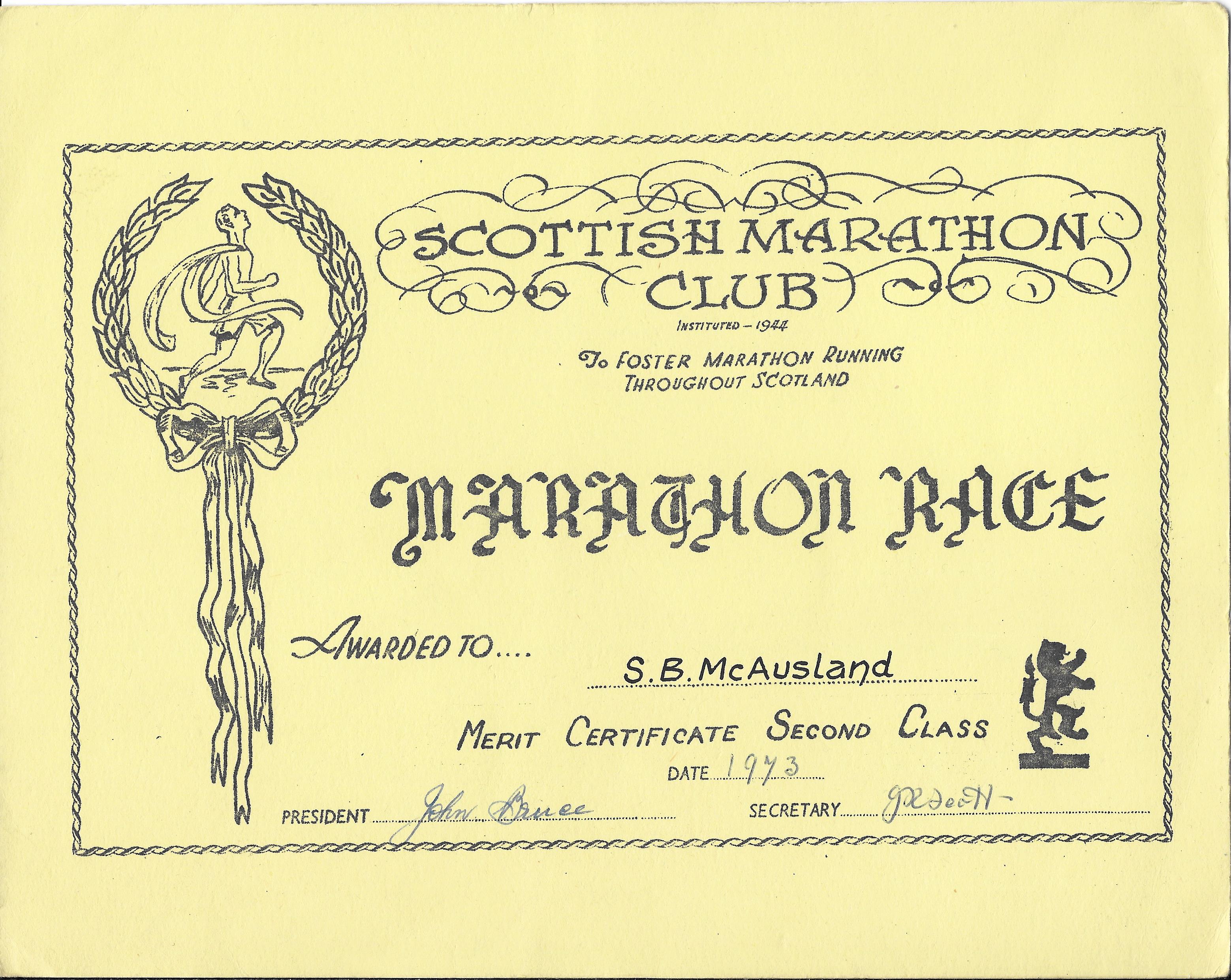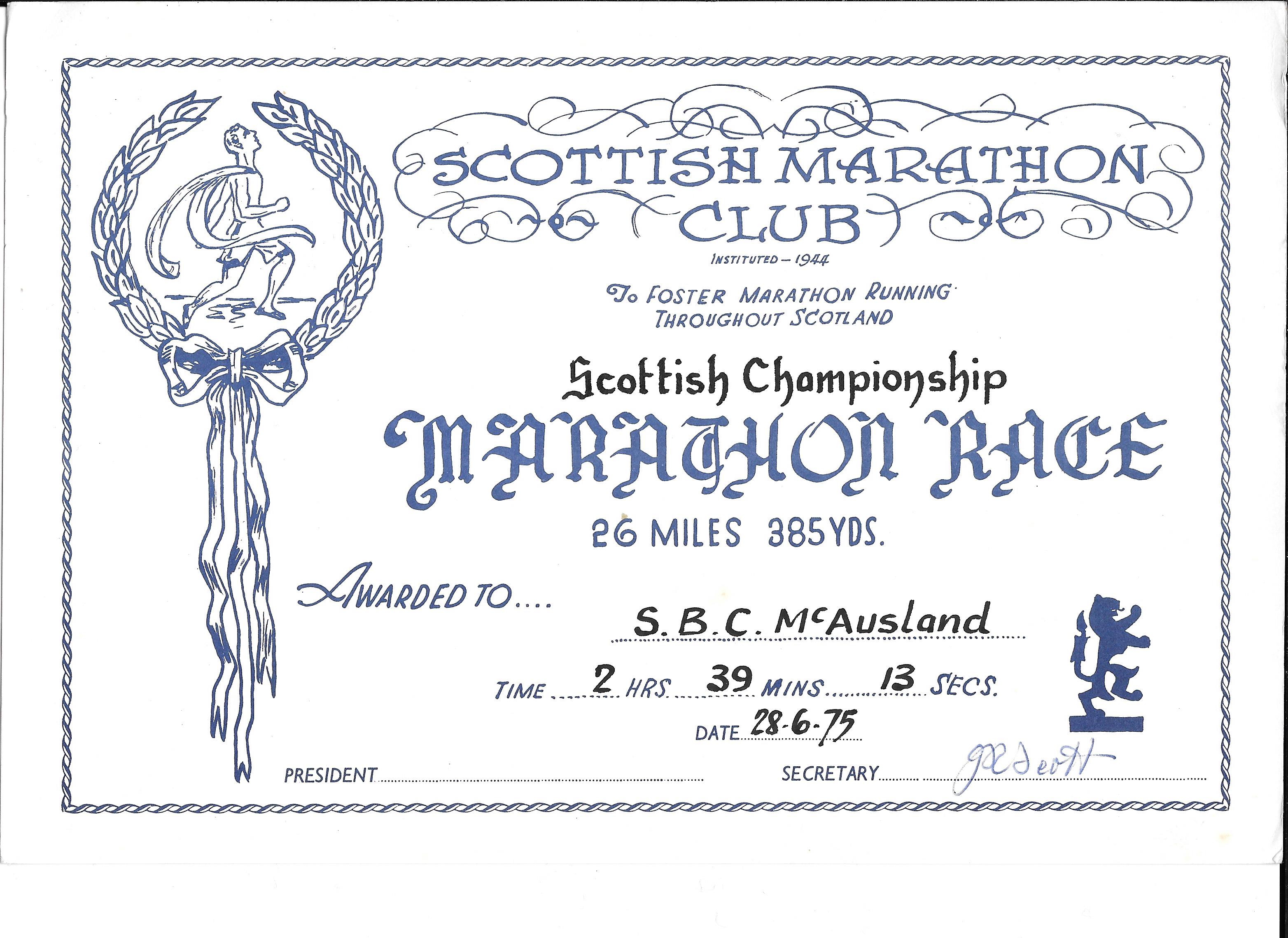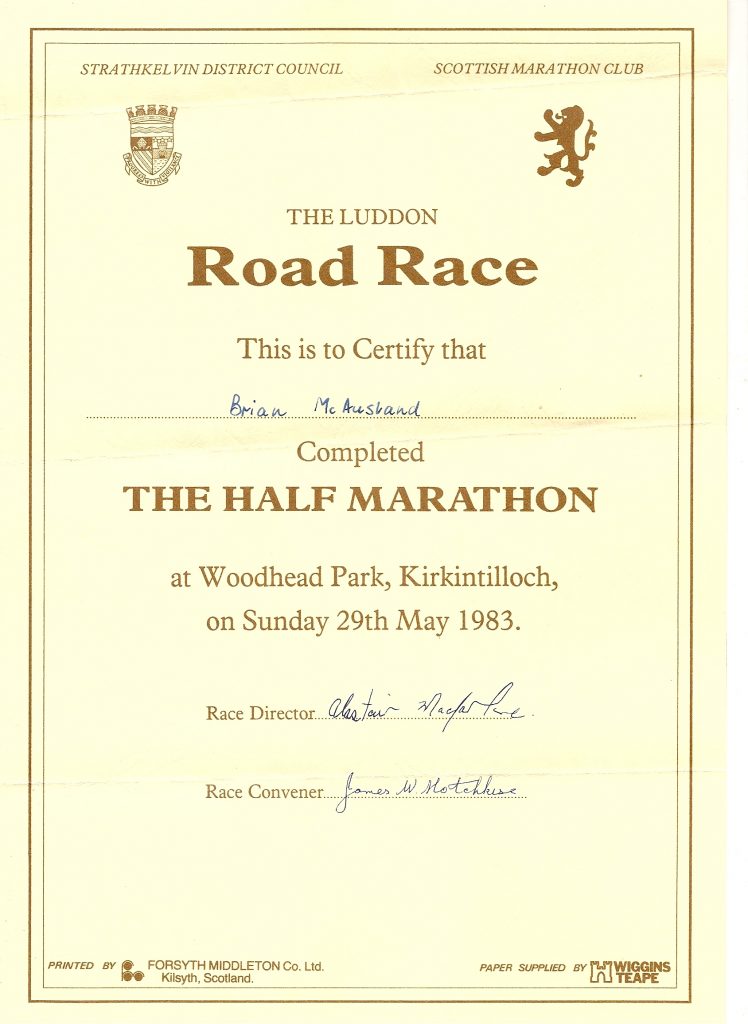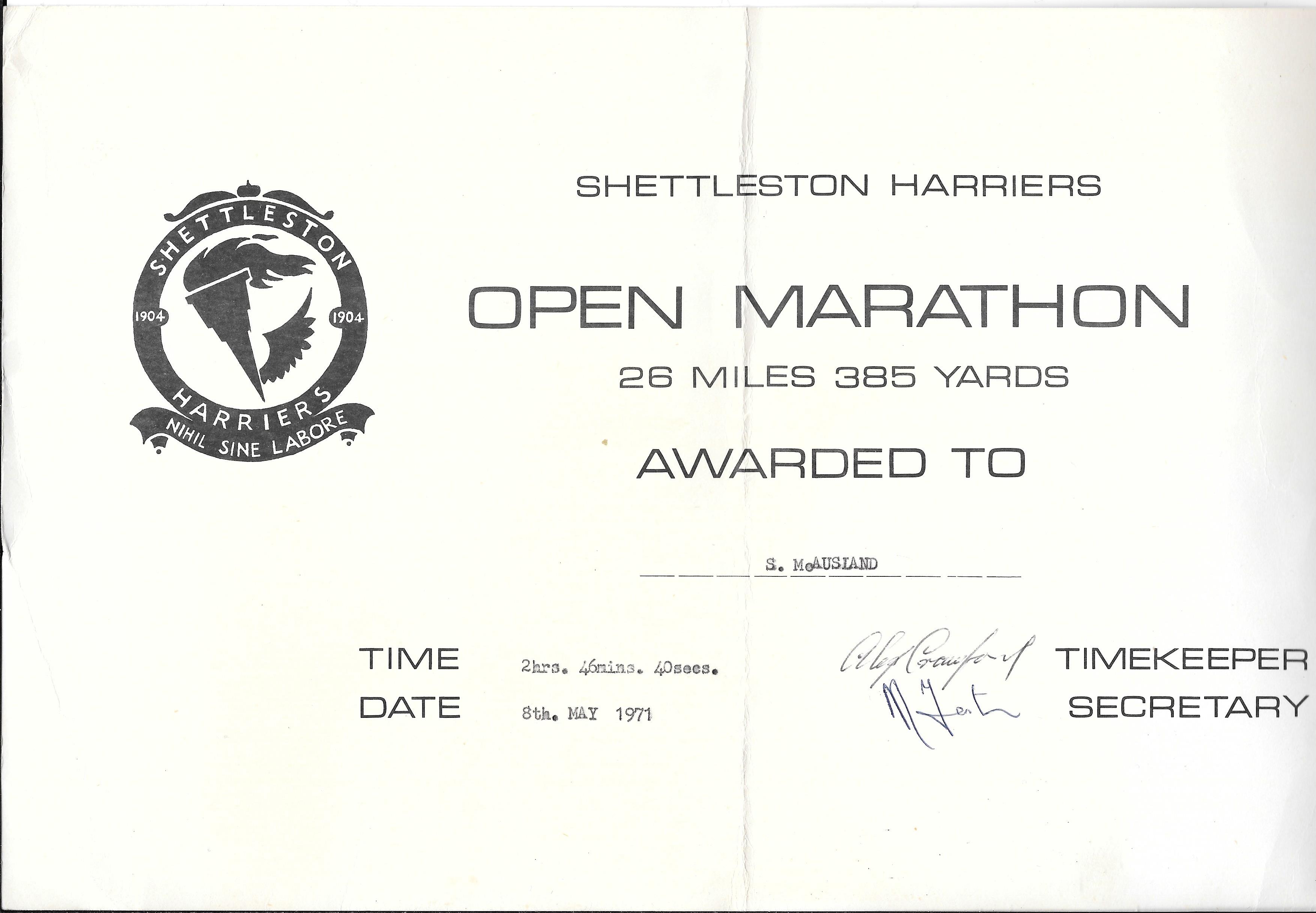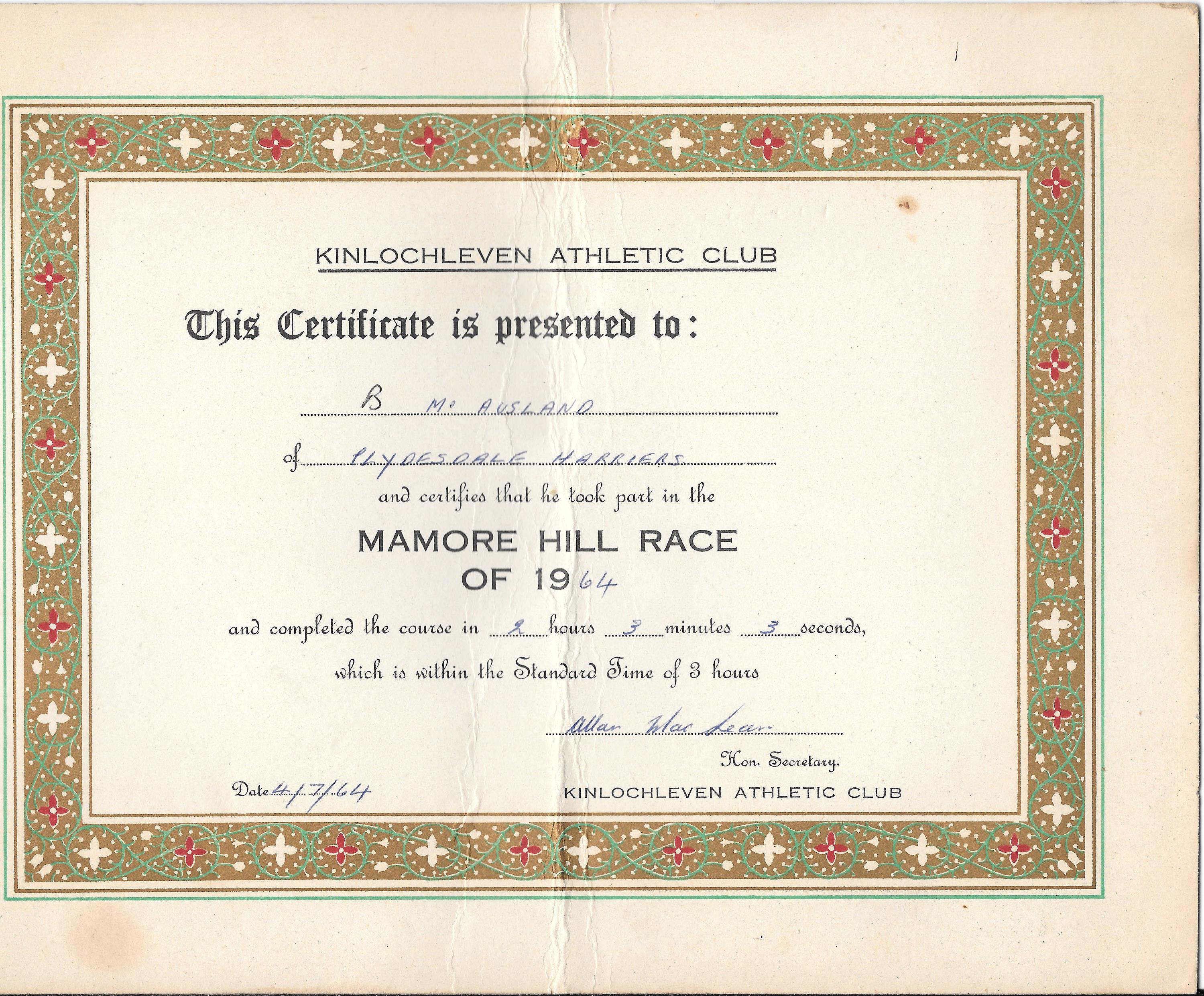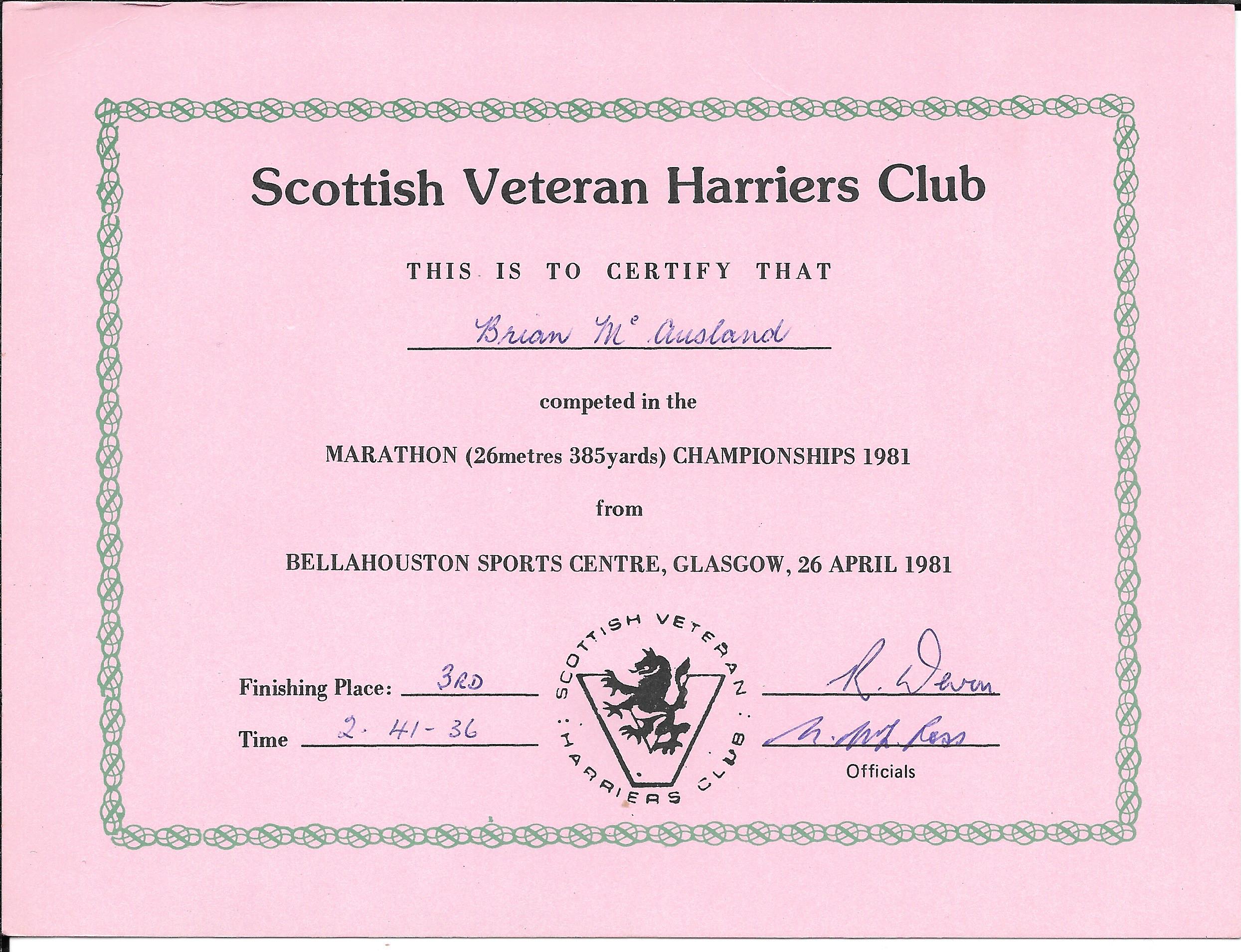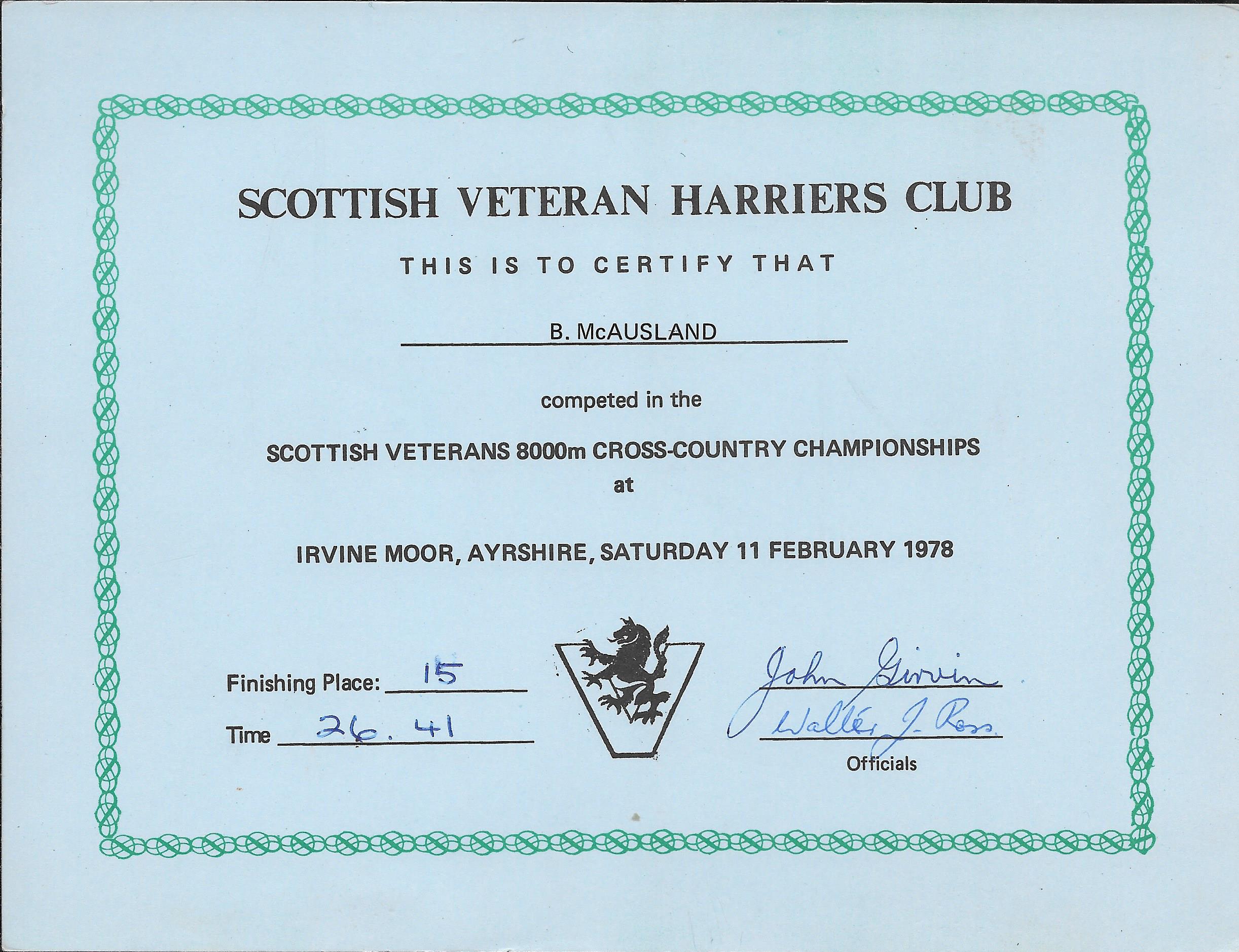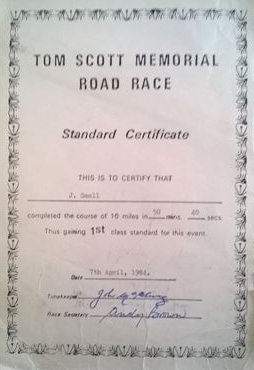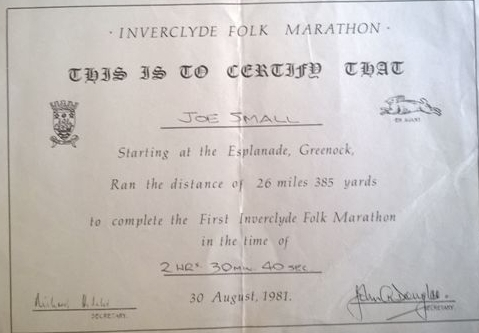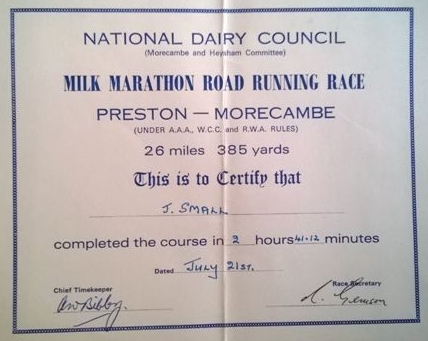Race Certificates used to be designed with a certain flair; and prized by finishers. Since the 1980s certificates have usually been replaced by medals, especially in mass participation events. This is a pity – a medal tells you nothing about the event whereas the certificate gives you date, event, distance, runner’s name, often time as well and on occasion more than that. We have about 40, from 6 runners, shown below dating from 1932 and including international participation examples as well as many others. We start with some from the 1930’s then go on to Colin Youngson’s from the 1970’s – what a contrast! Colin has a wide range of certificates in every sense of the word: ranging across three continents, and a wide range of distances from 10 miles to 50+ miles. There is a second page of certificates mainly for hill races and from Denis Bell’s collection. Just click on his name. By the way, runners were also awarded track suit patches – of you’d like to see them, just go here .
Not strictly speaking certificates, but we’ll make an exception as part of Colin’s collection!
Cut-down winner’s sash for Swedish Winter Marathon (November 1973, minus five centigrade)
Marathon to Athens marathon 1976
Edinburgh Southern Harriers – Grand Slam Winter 1978-1979
Second in the First 7 Hills of Edinburgh Race 1980
James Youngson finished third M65. The Scottish M65 team won World Veteran Marathon gold medals!
Not a bad time, aged 67! Meanwhile, on the same day, his son was racing from London to Brighton
1980 London to Brighton Road Race: 54 and a quarter miles: 7th place
Having a look at the certificates, I still prefer them to the medals – not the gold, silver and bronze ones that are for those fighting out the leading positions, but those given to all finishers – simply because the medal tells you nothing about the race. The certificate, whether decorous or not, tells the time, date, often the place and the name of the person winning it. Authenticity is pretty well guaranteed by the signatures at the foot of the document. The medal tells you none of that. You can frame them and hang them on the wall, you can put them in an album as a record of your career or you can put them in a drawer until some performance needs to be verified.
The second page of certificates are almost ll for hill races. But for six exceptions (3 are from Shelagh King’s collection and 3 are of Lanarkshire championships).
